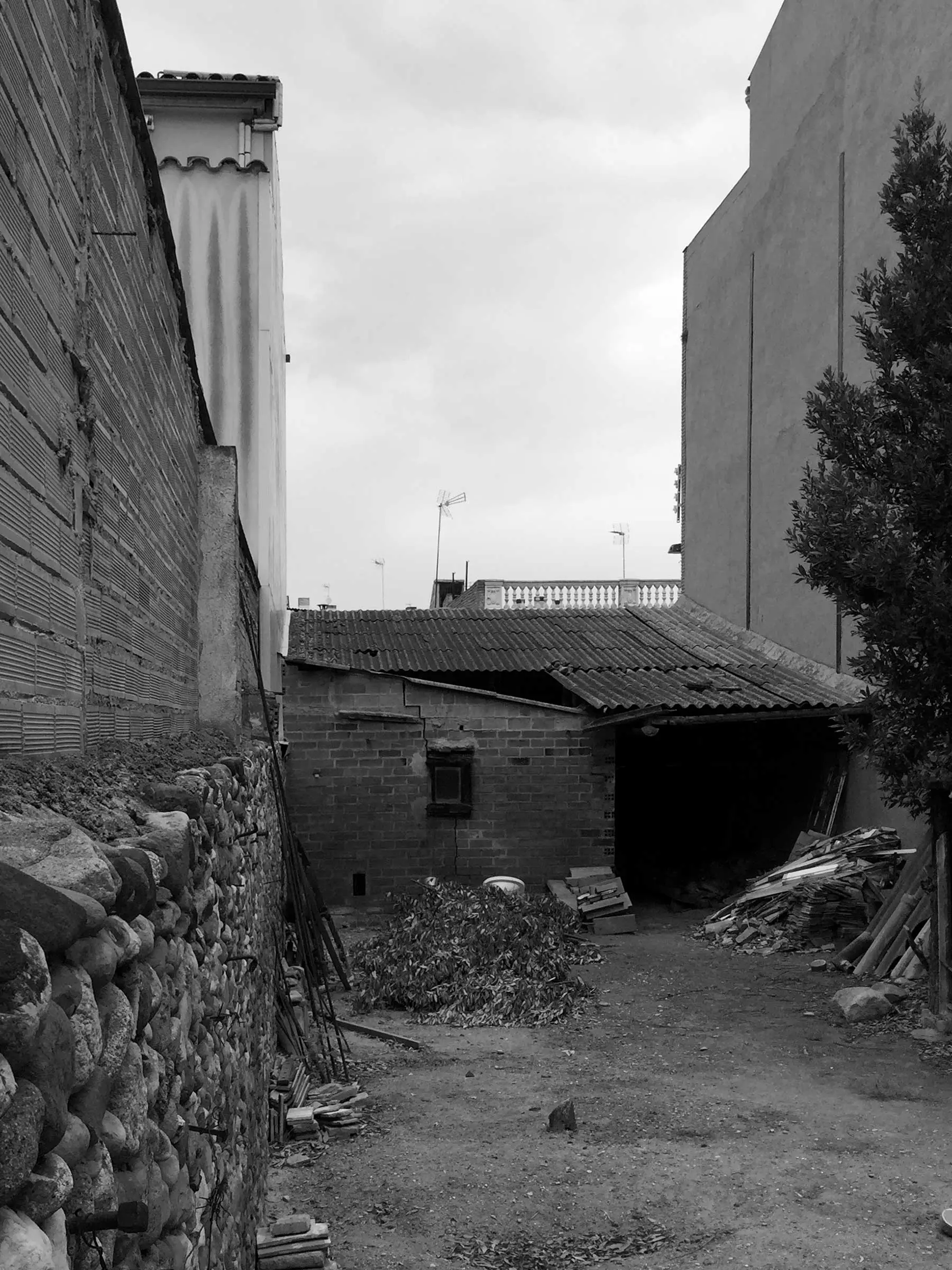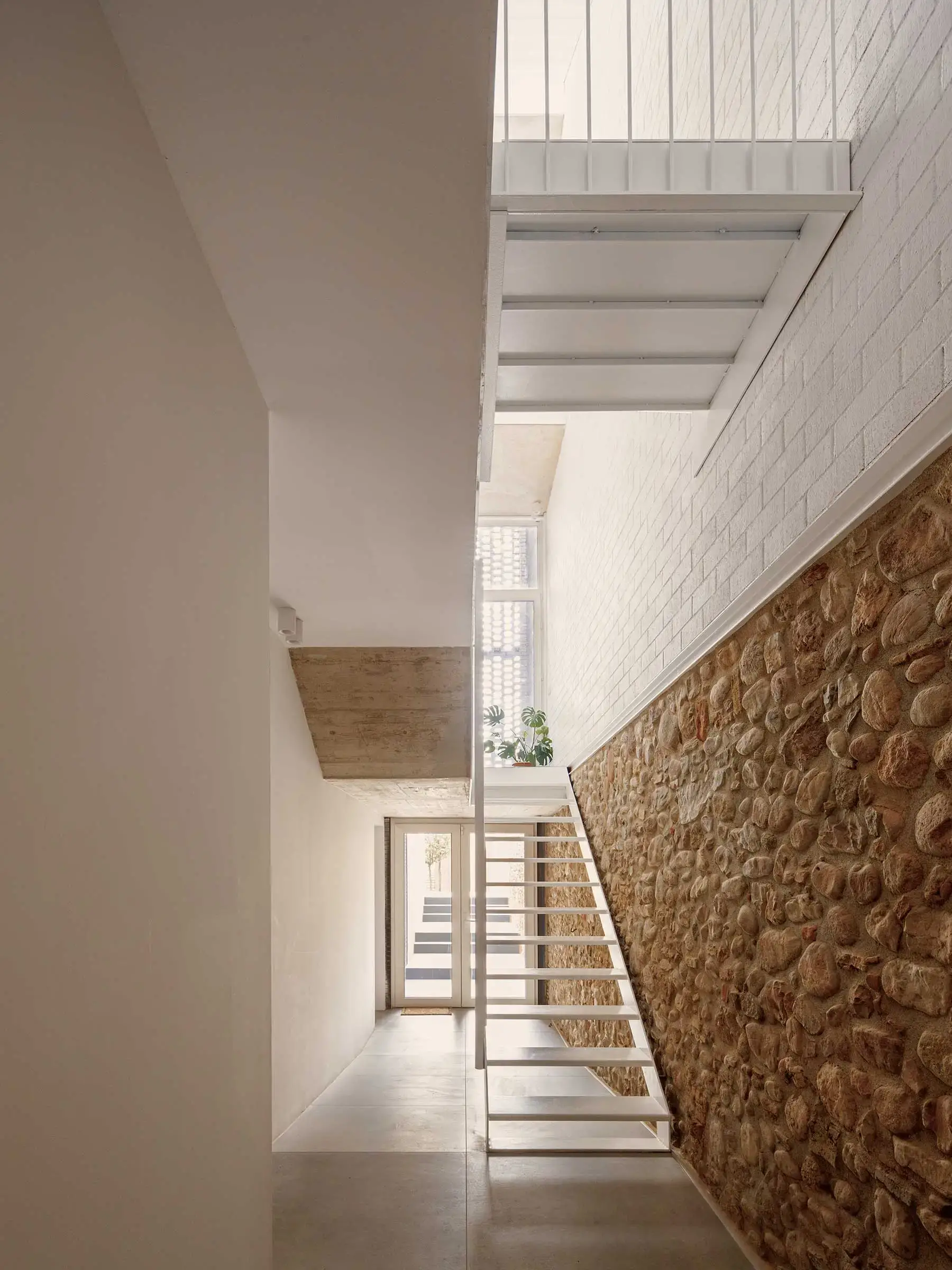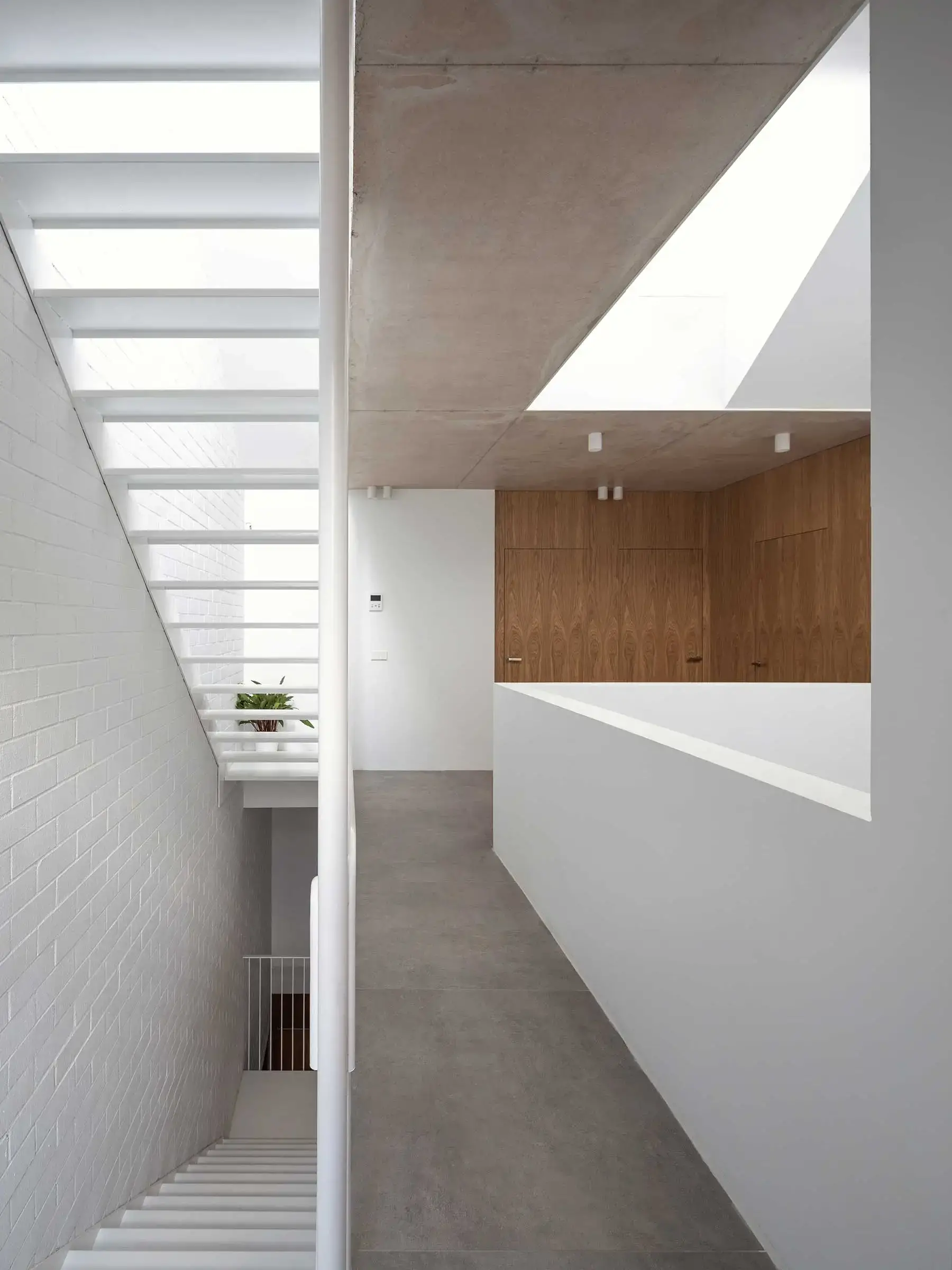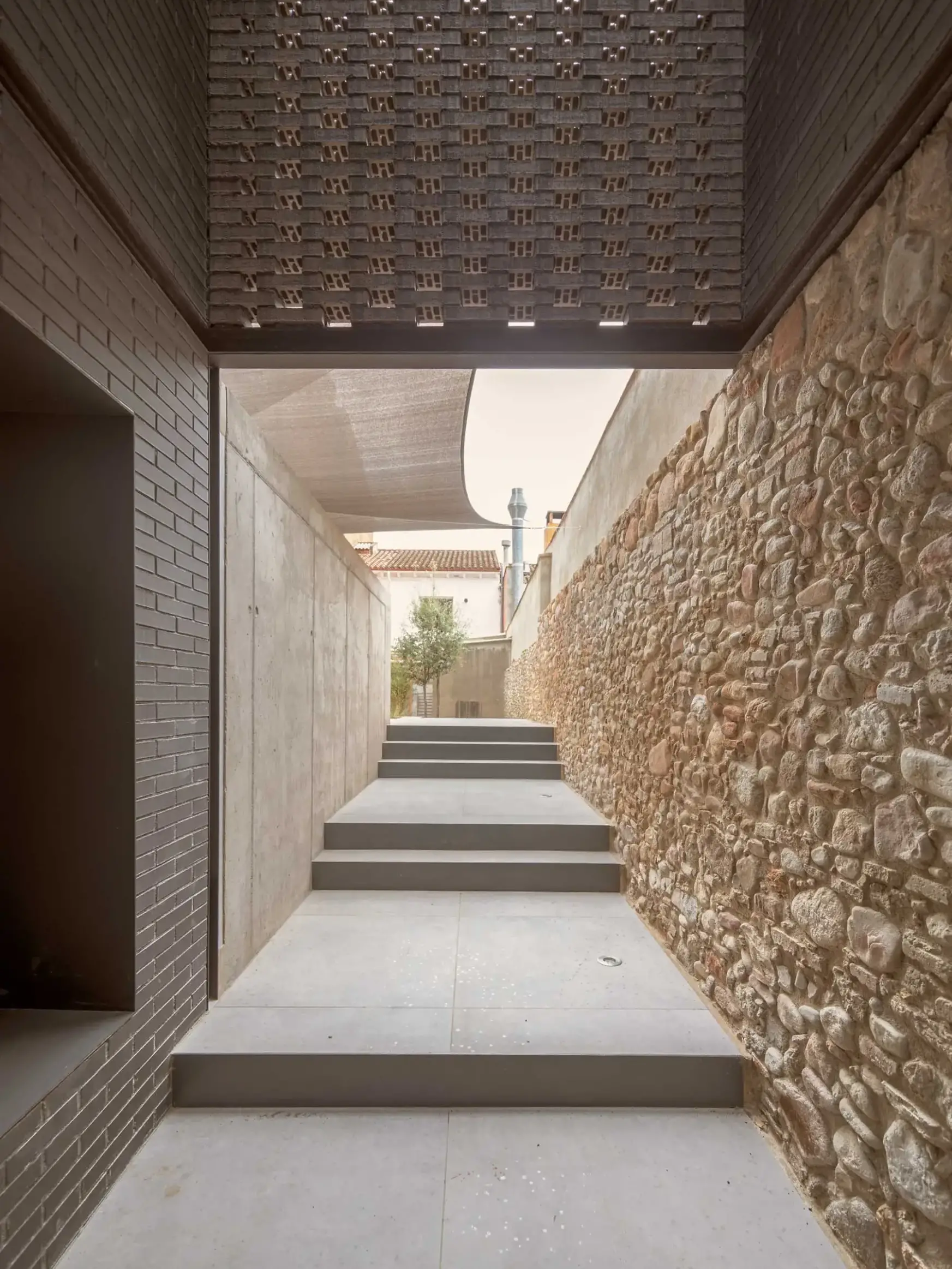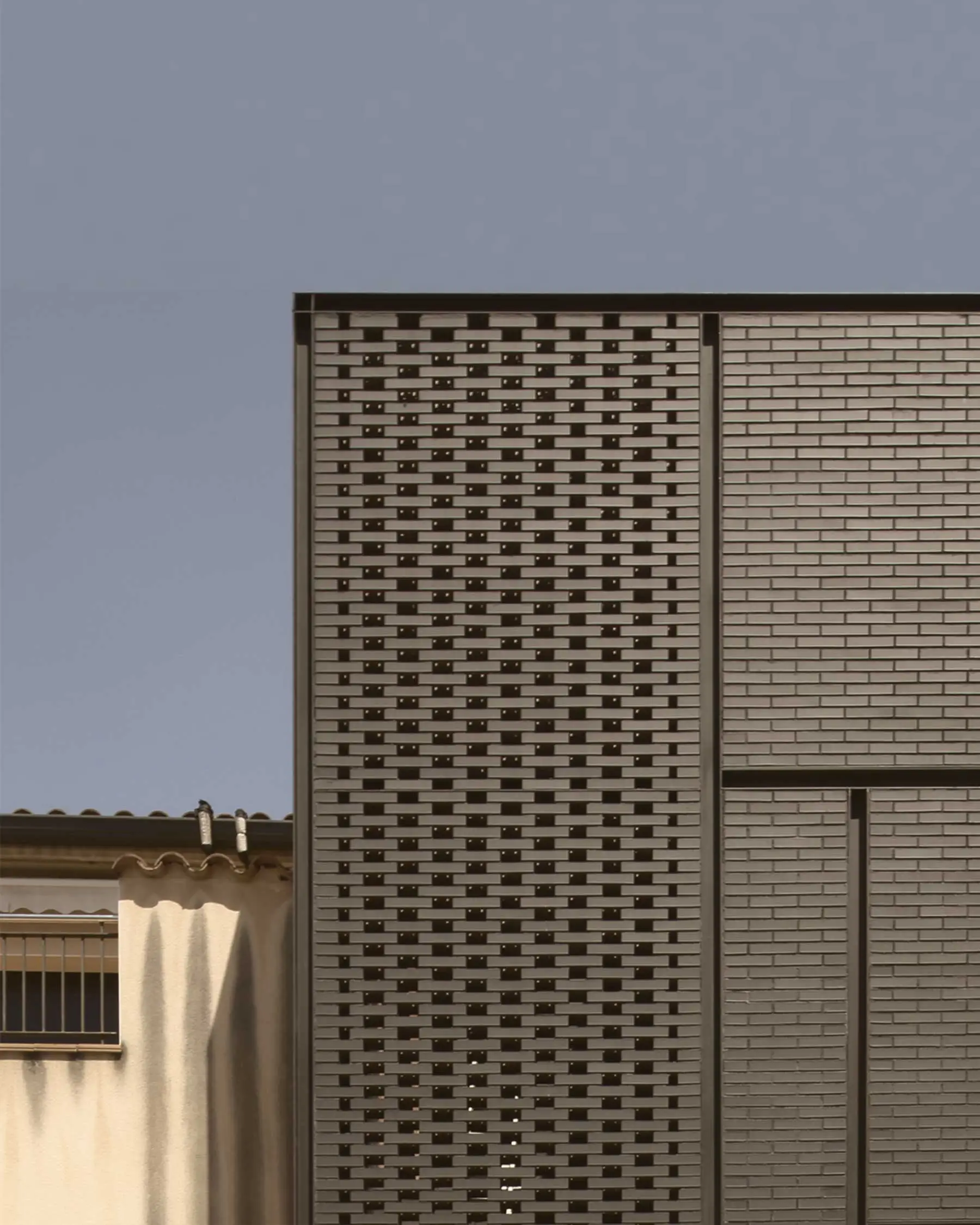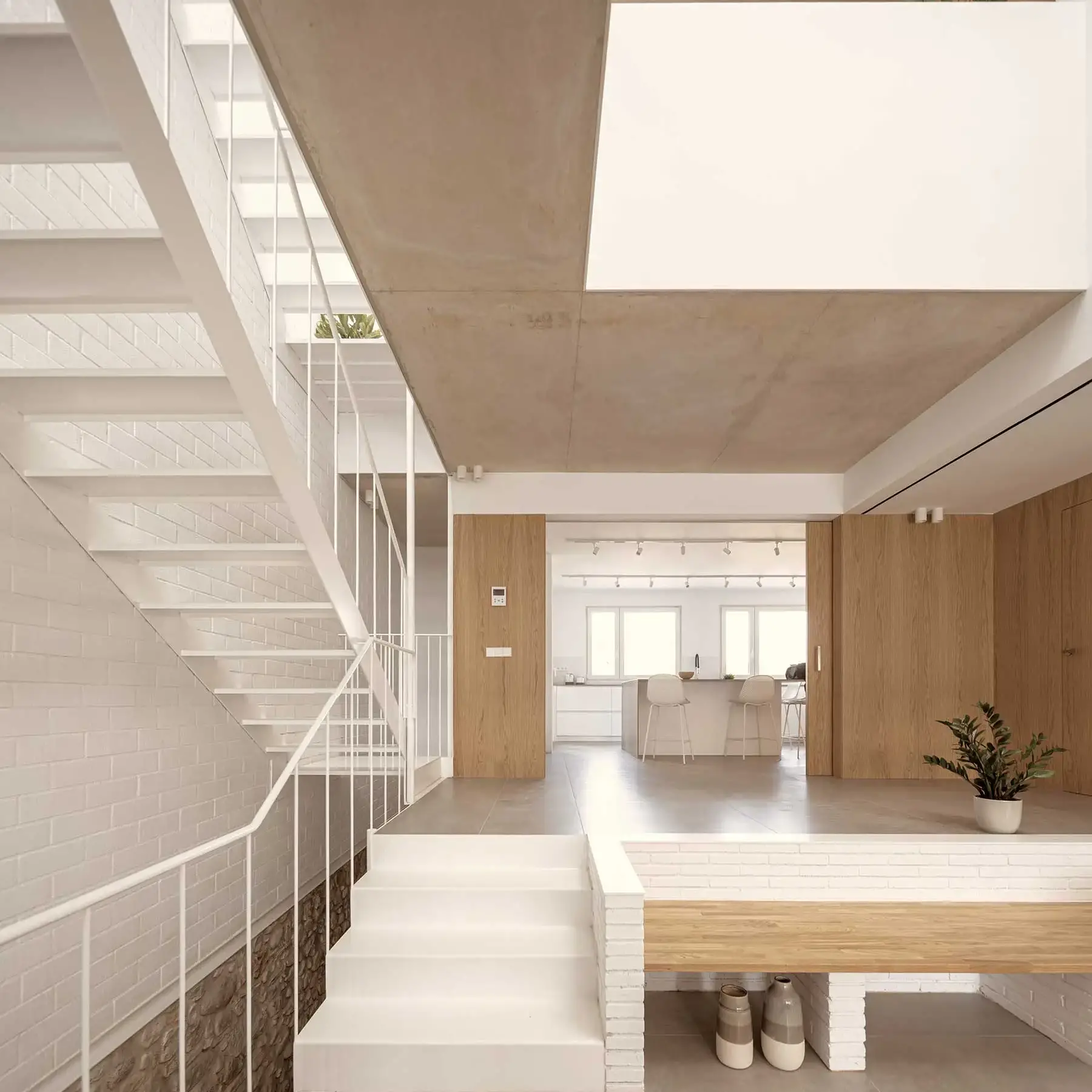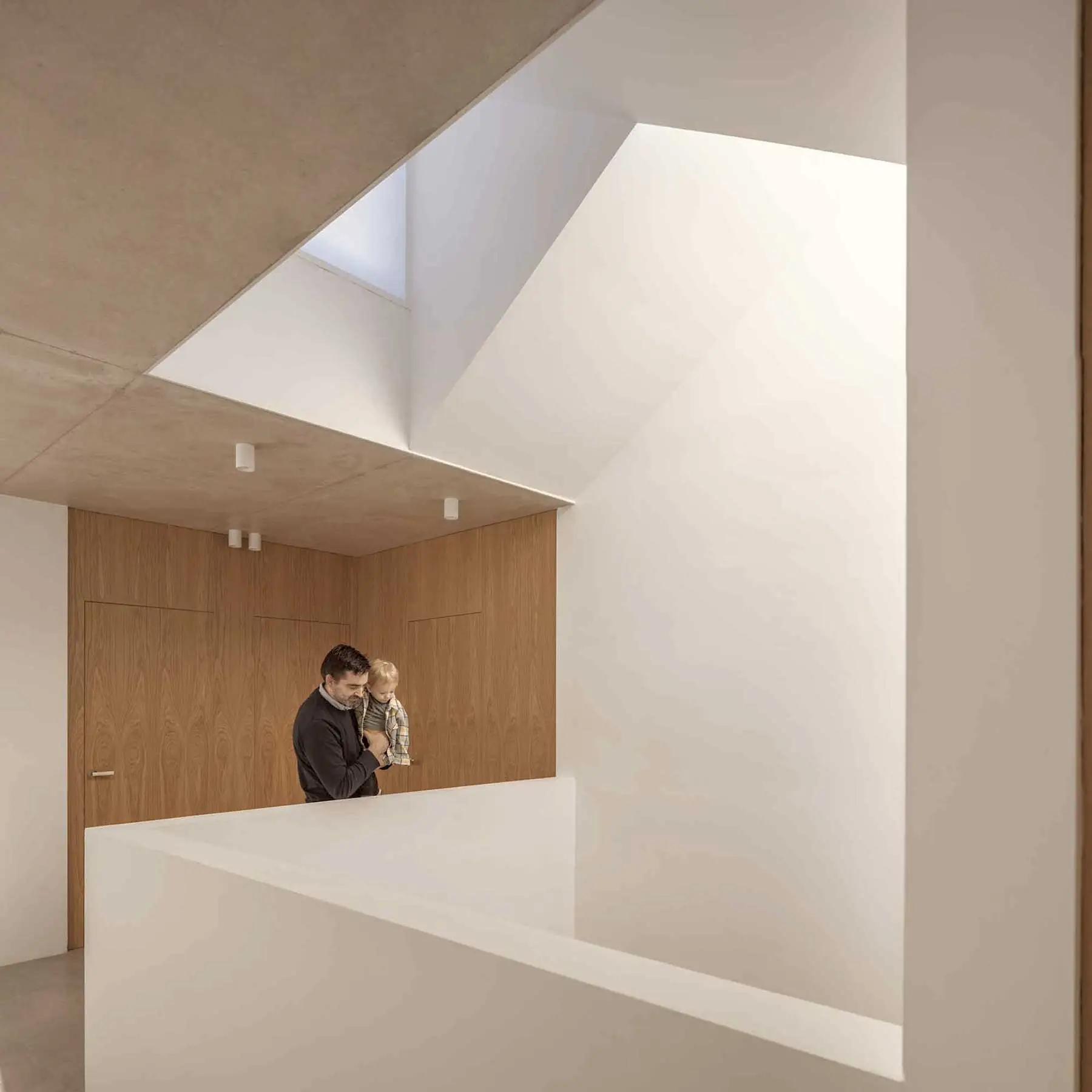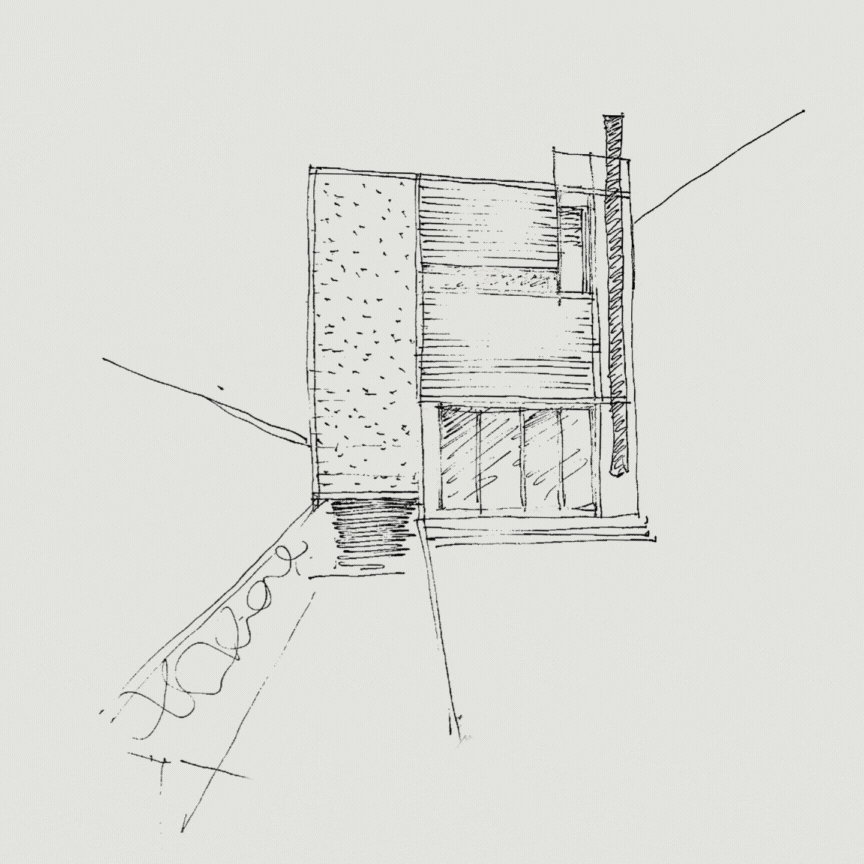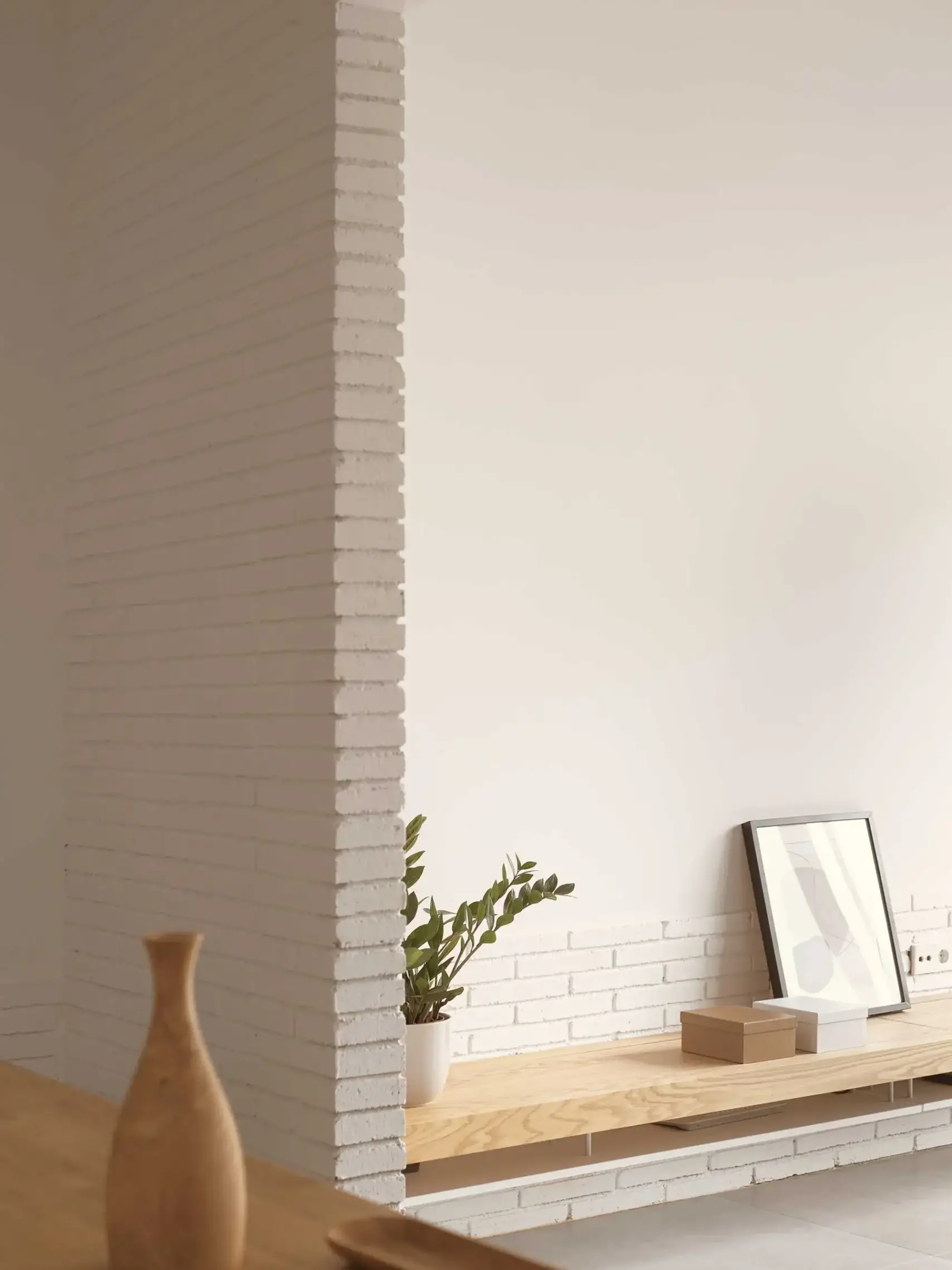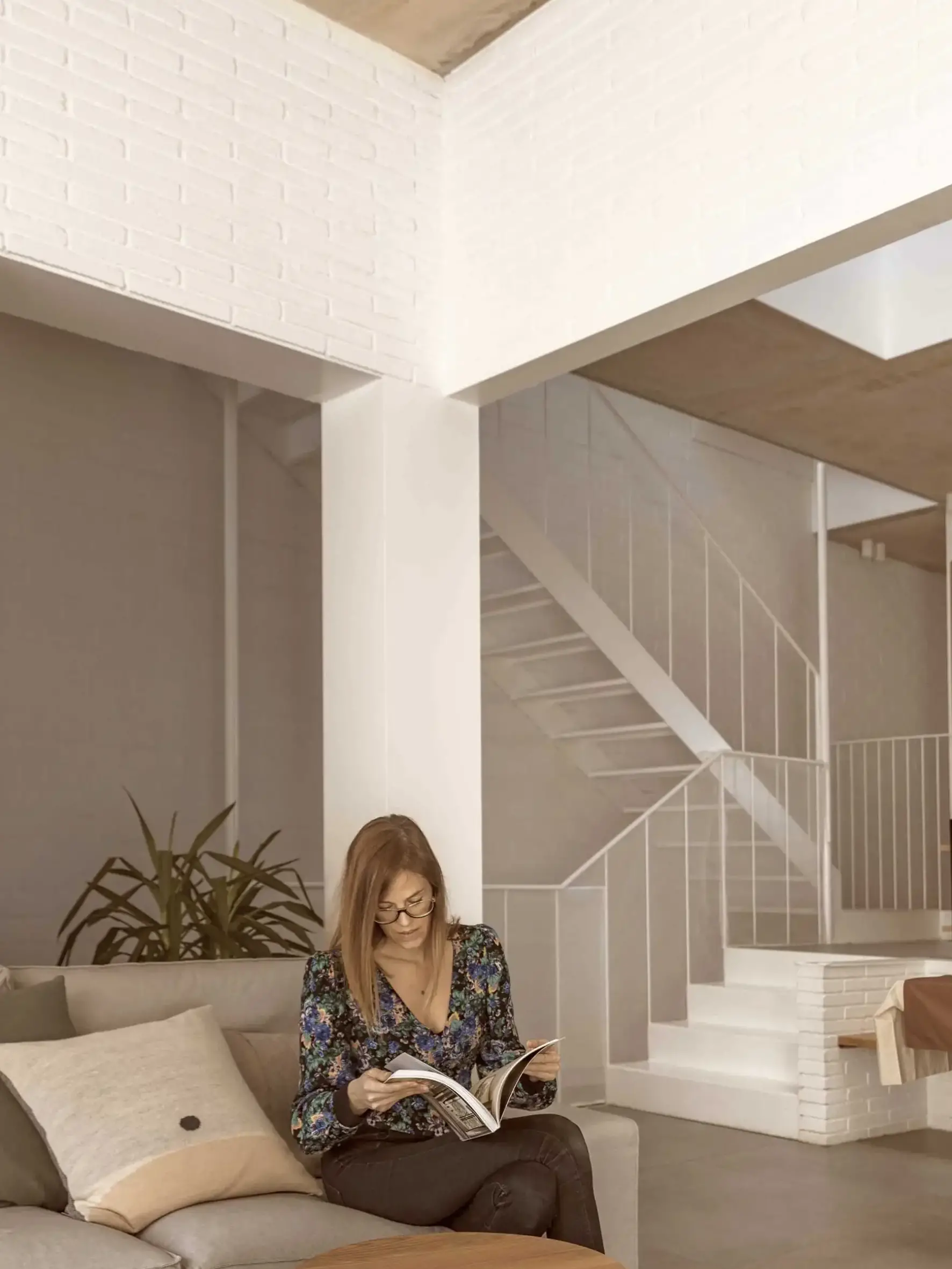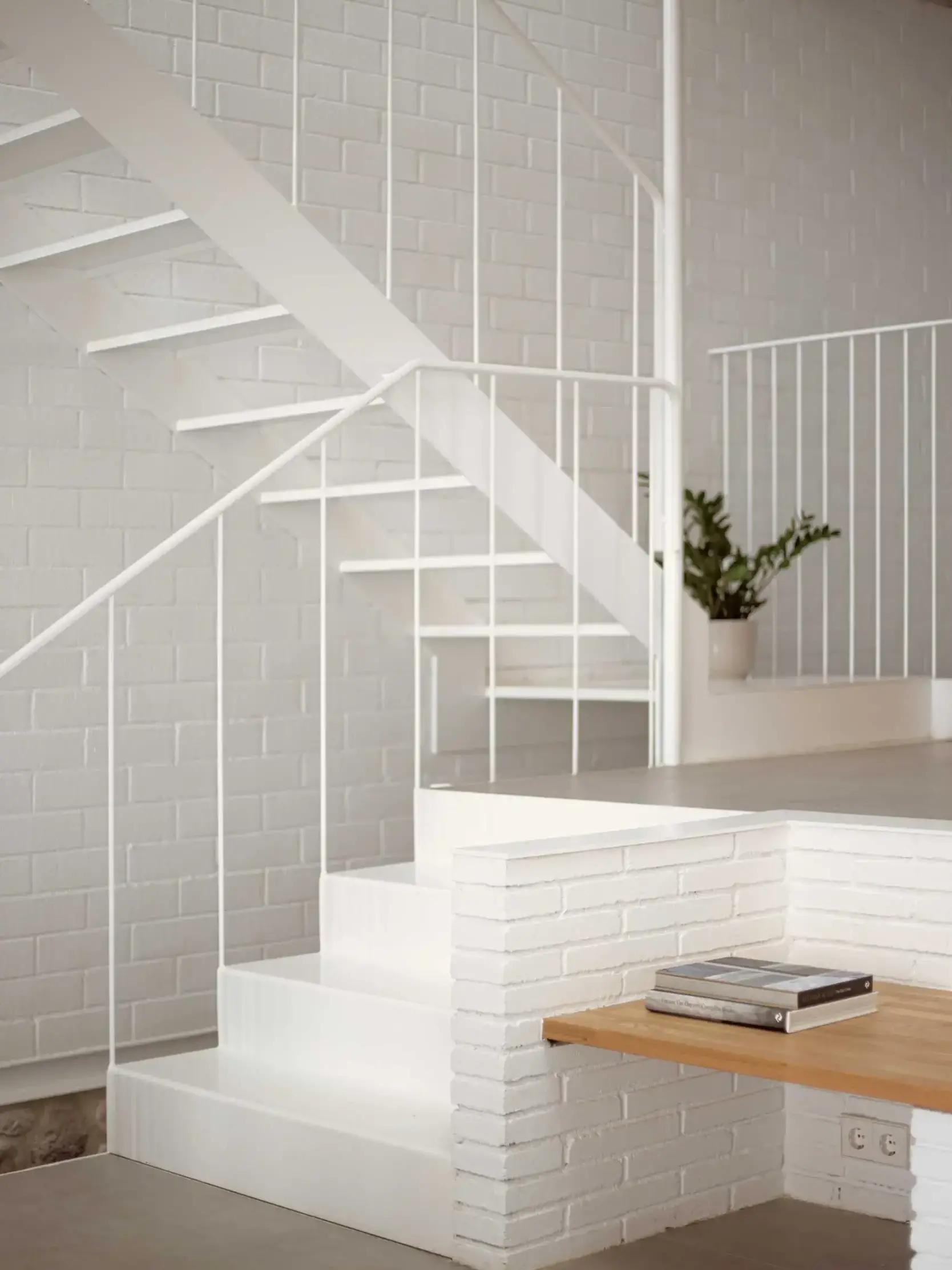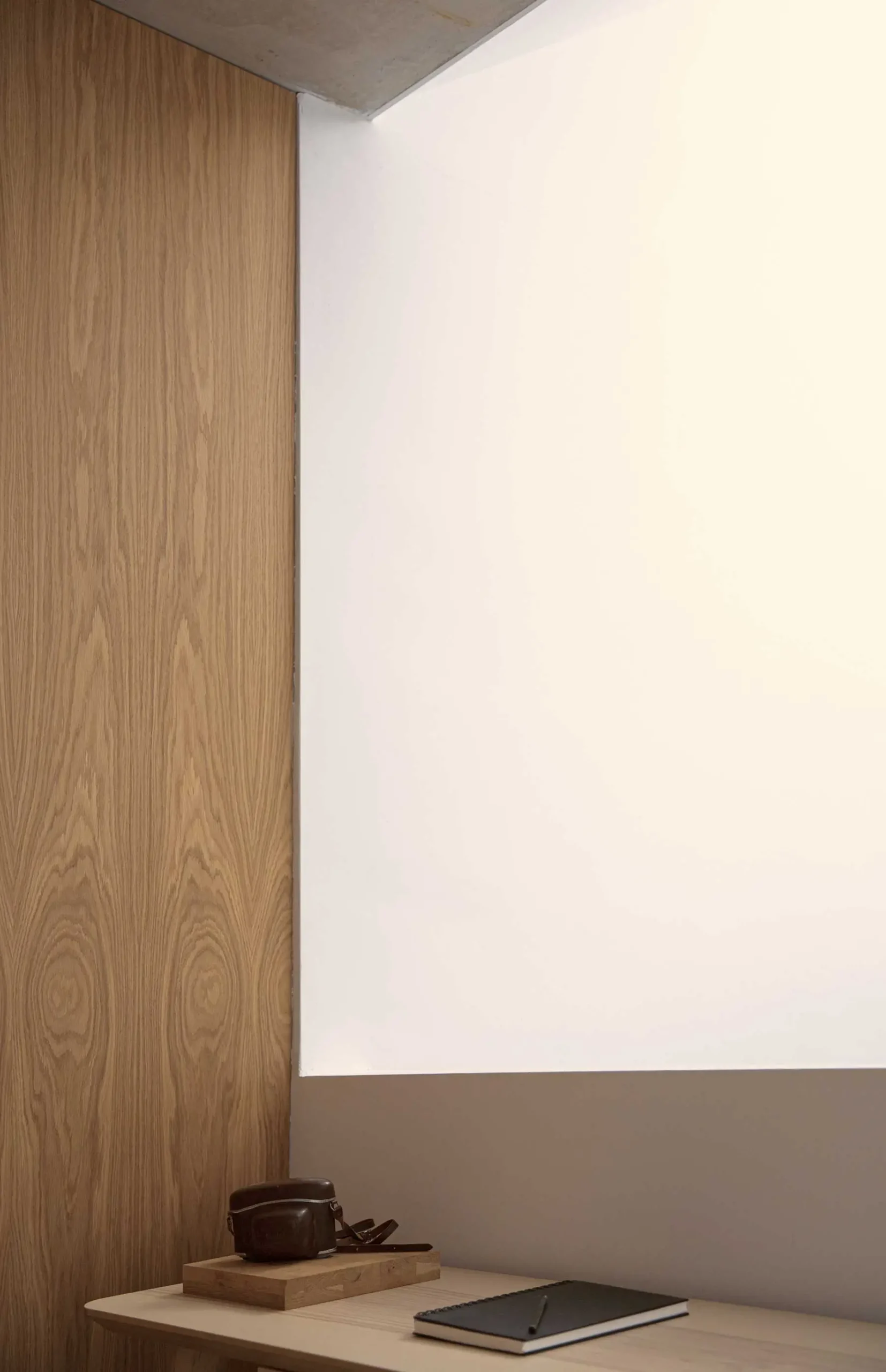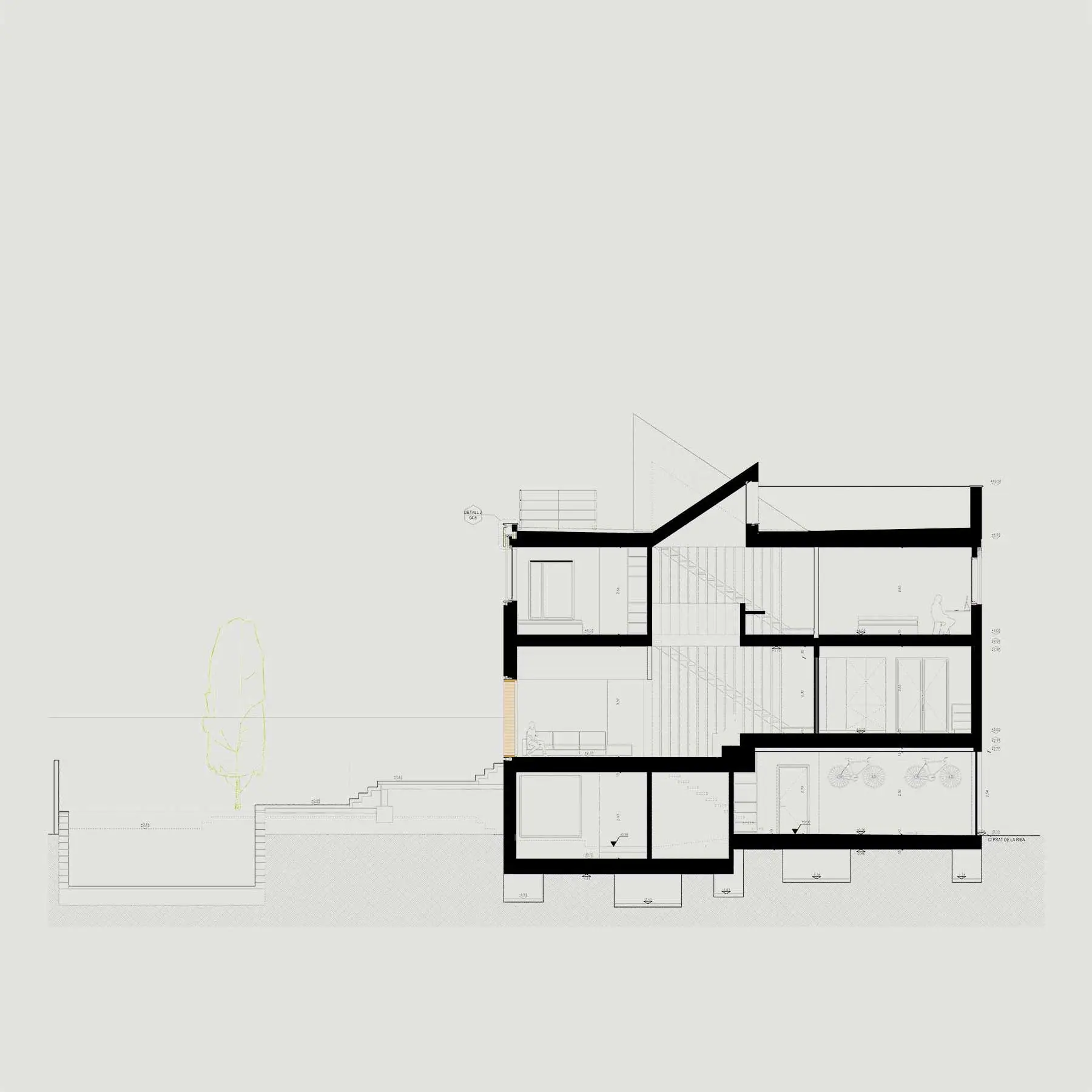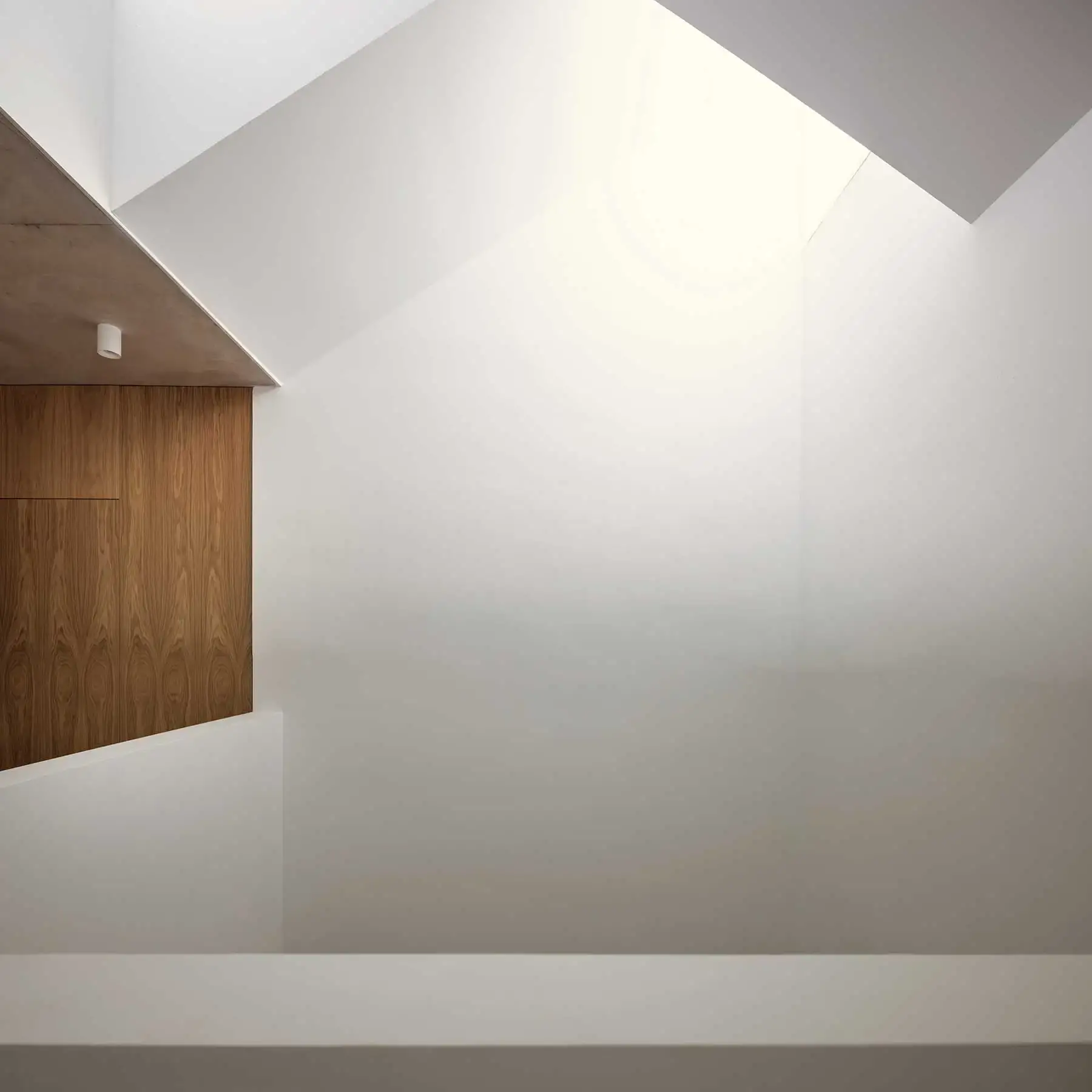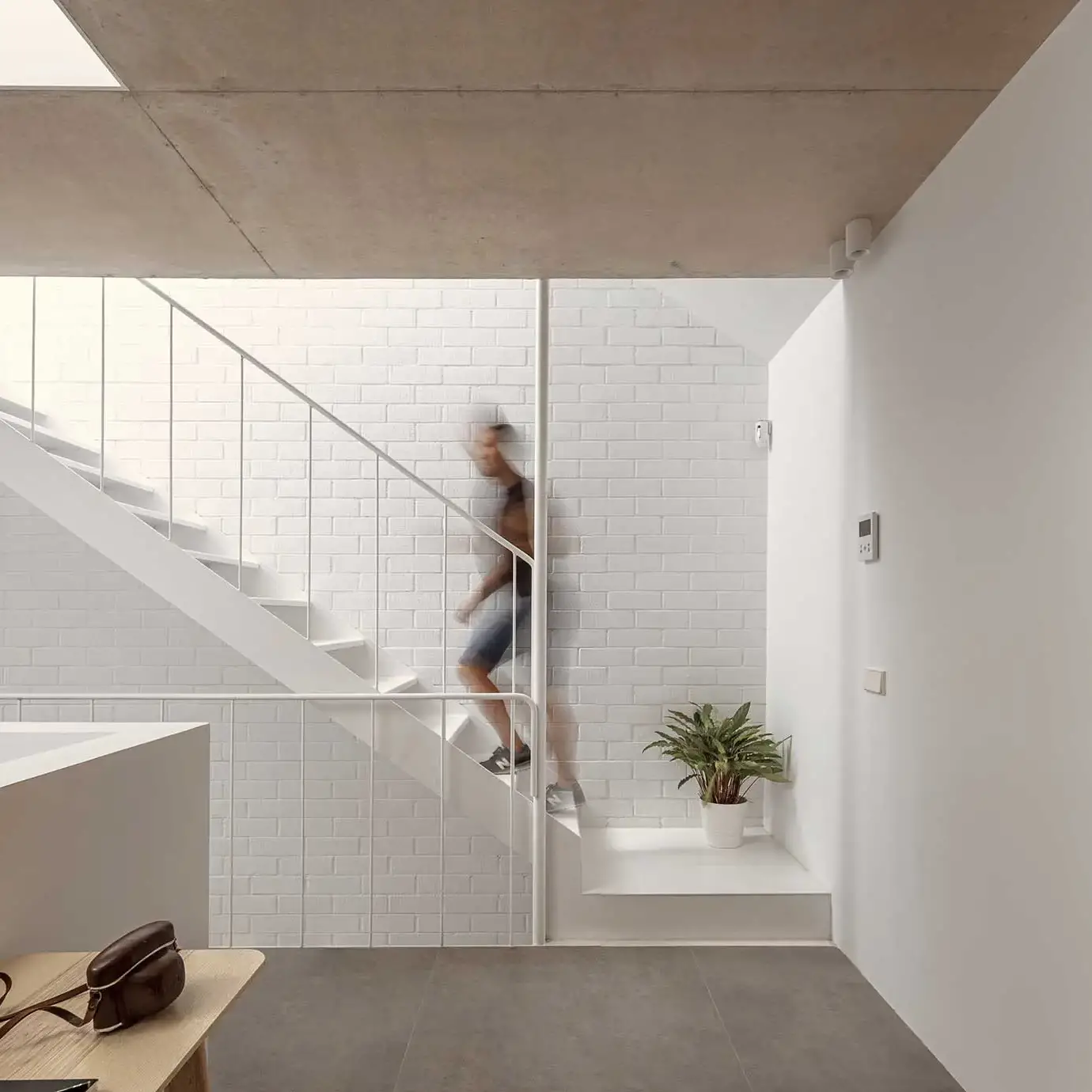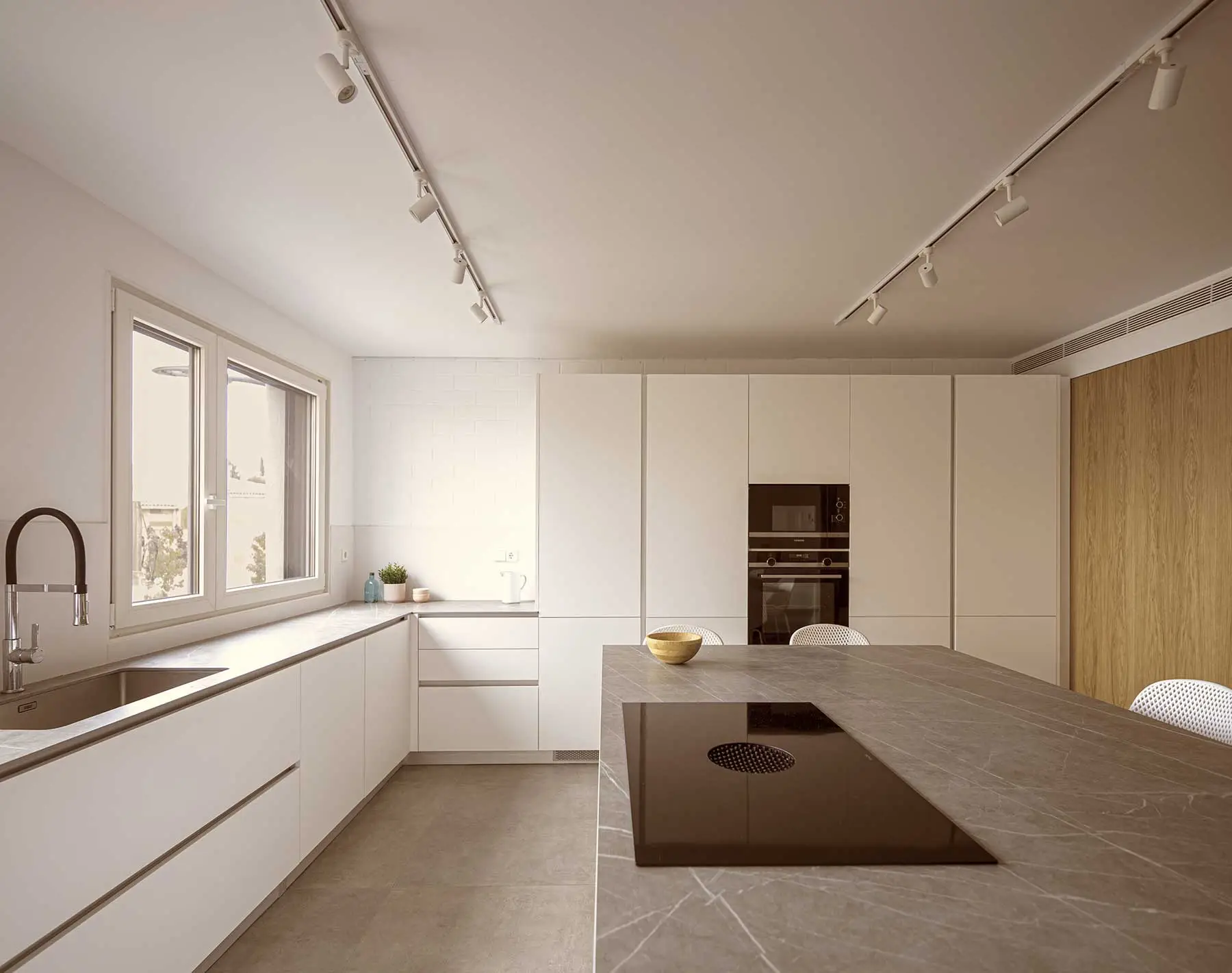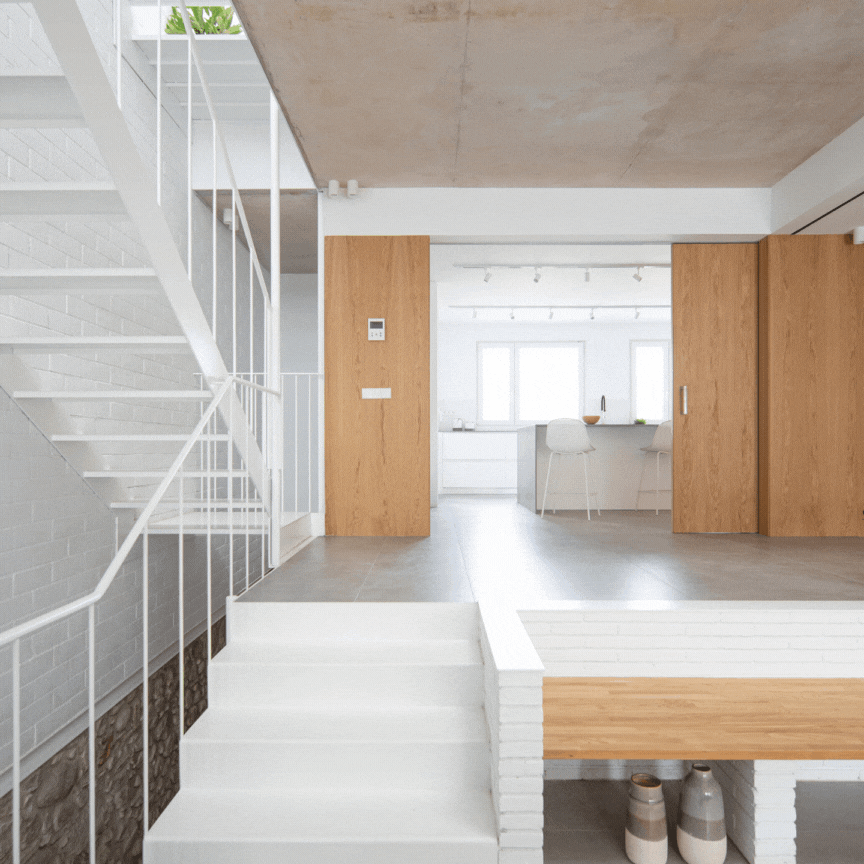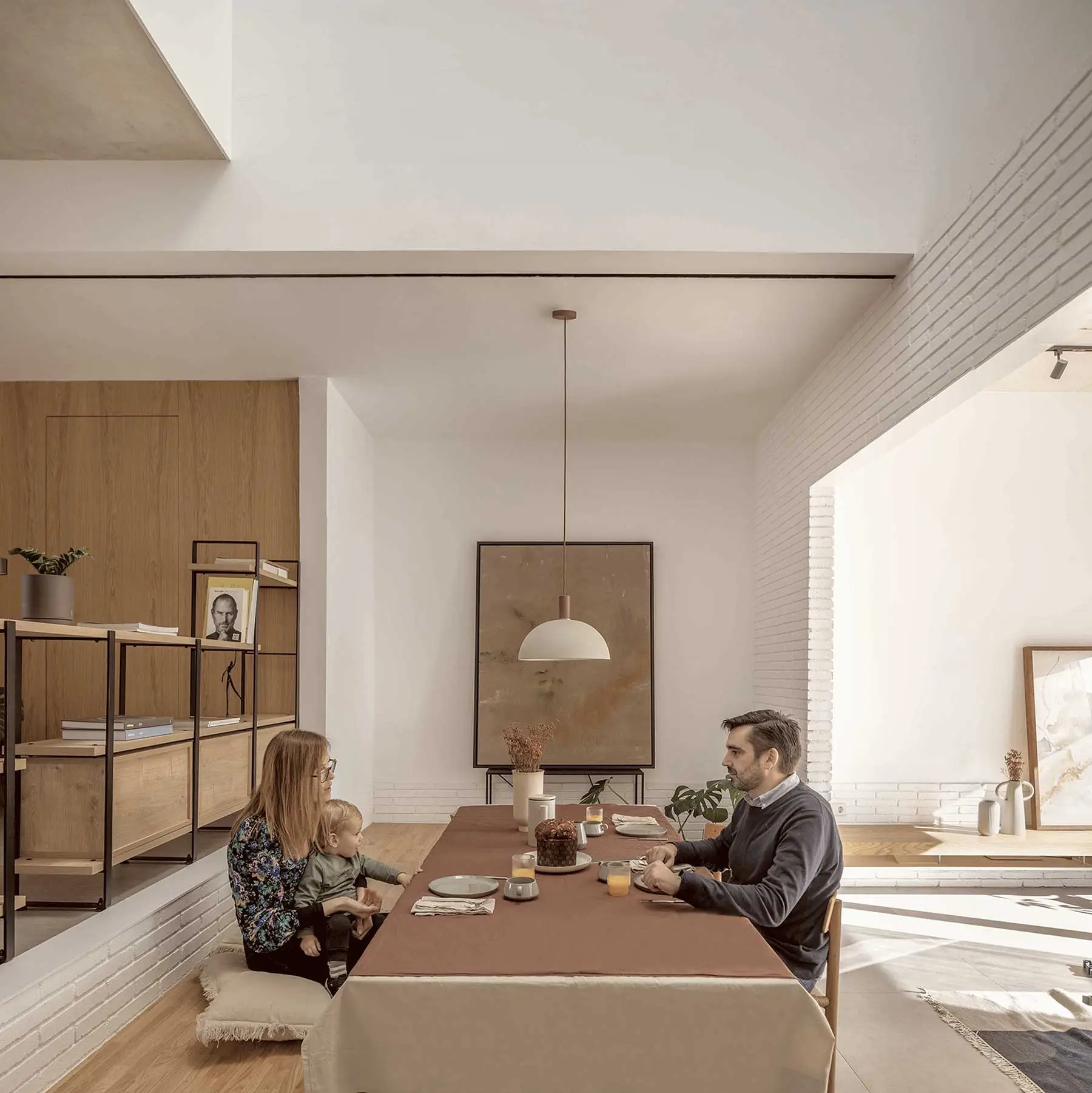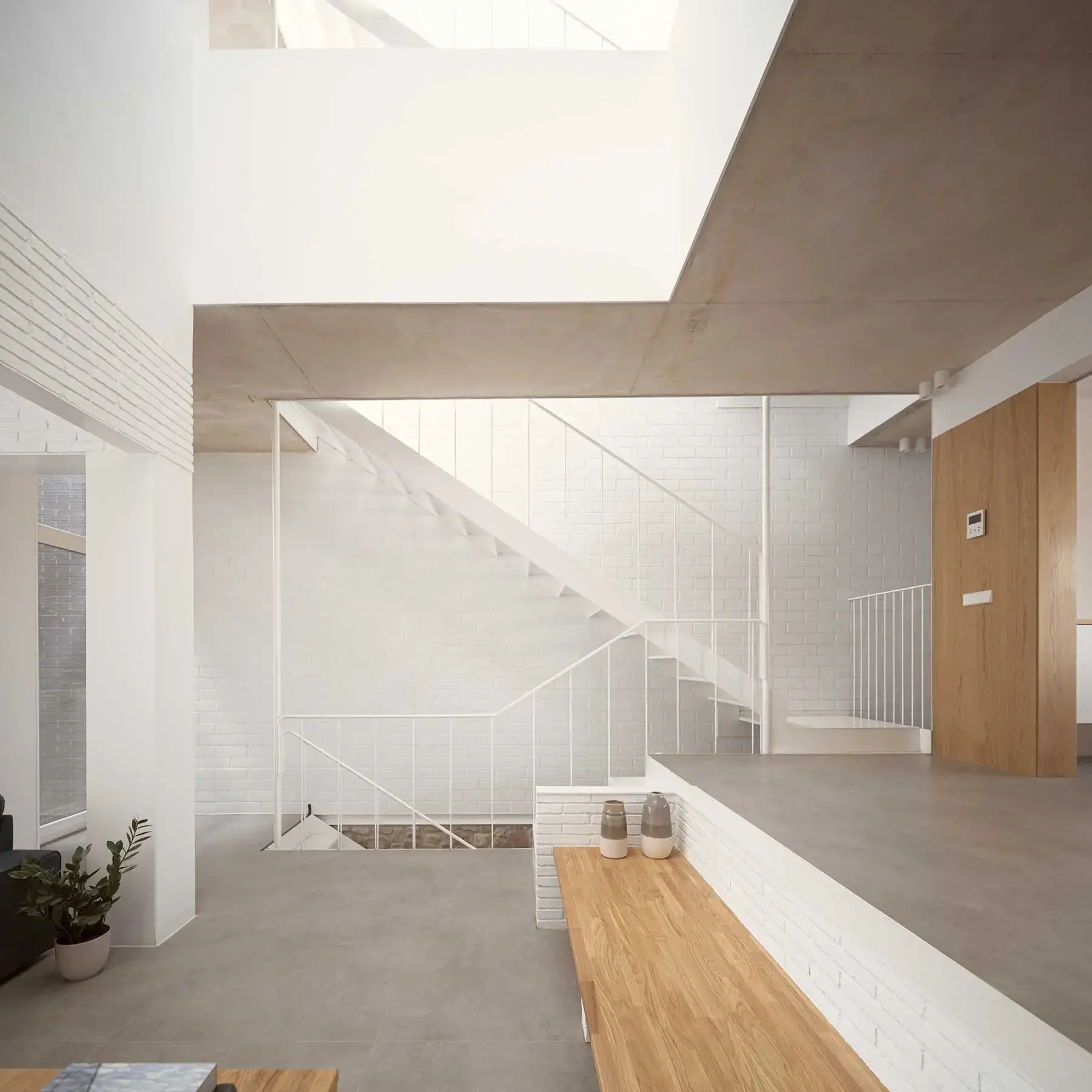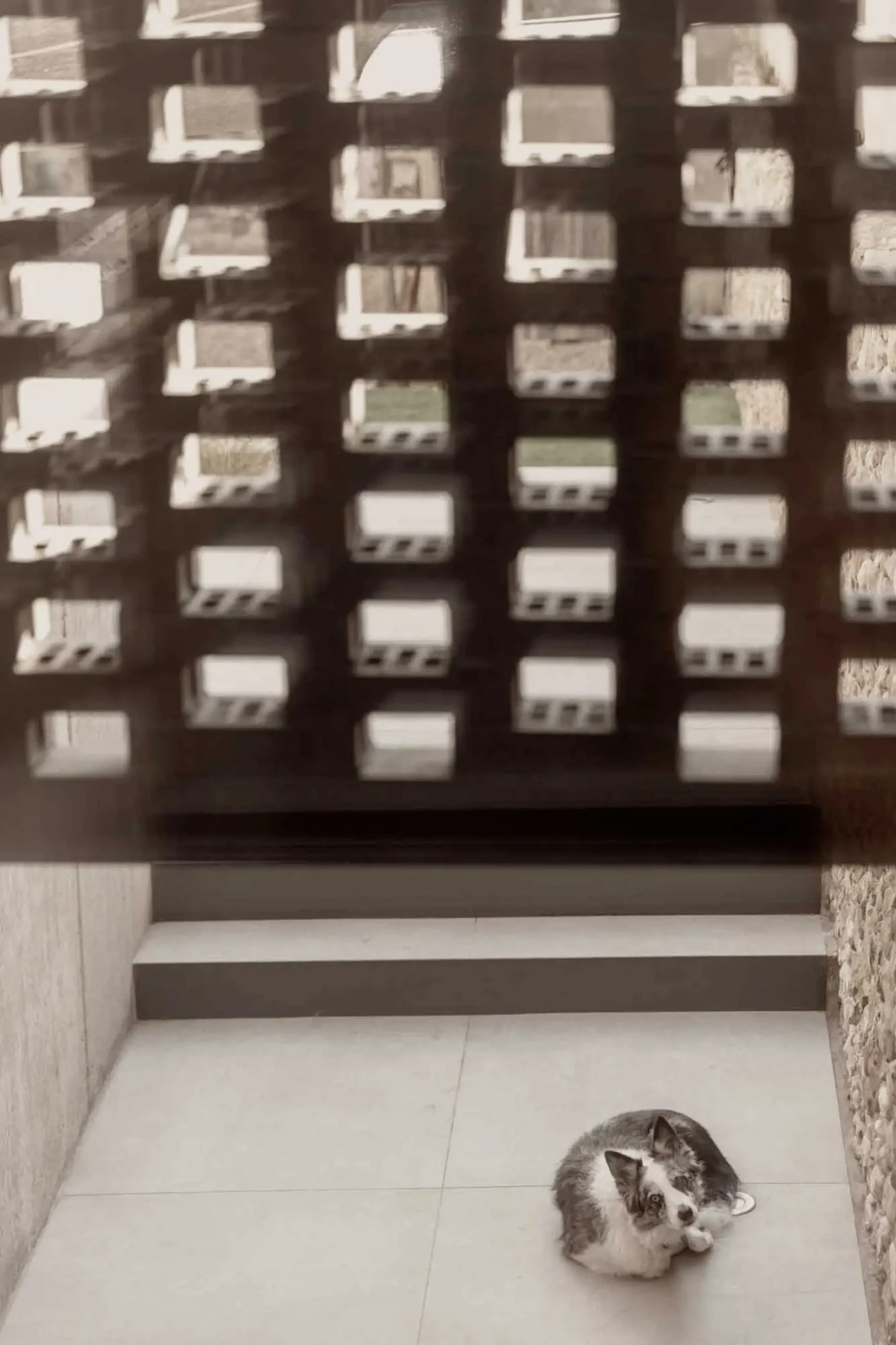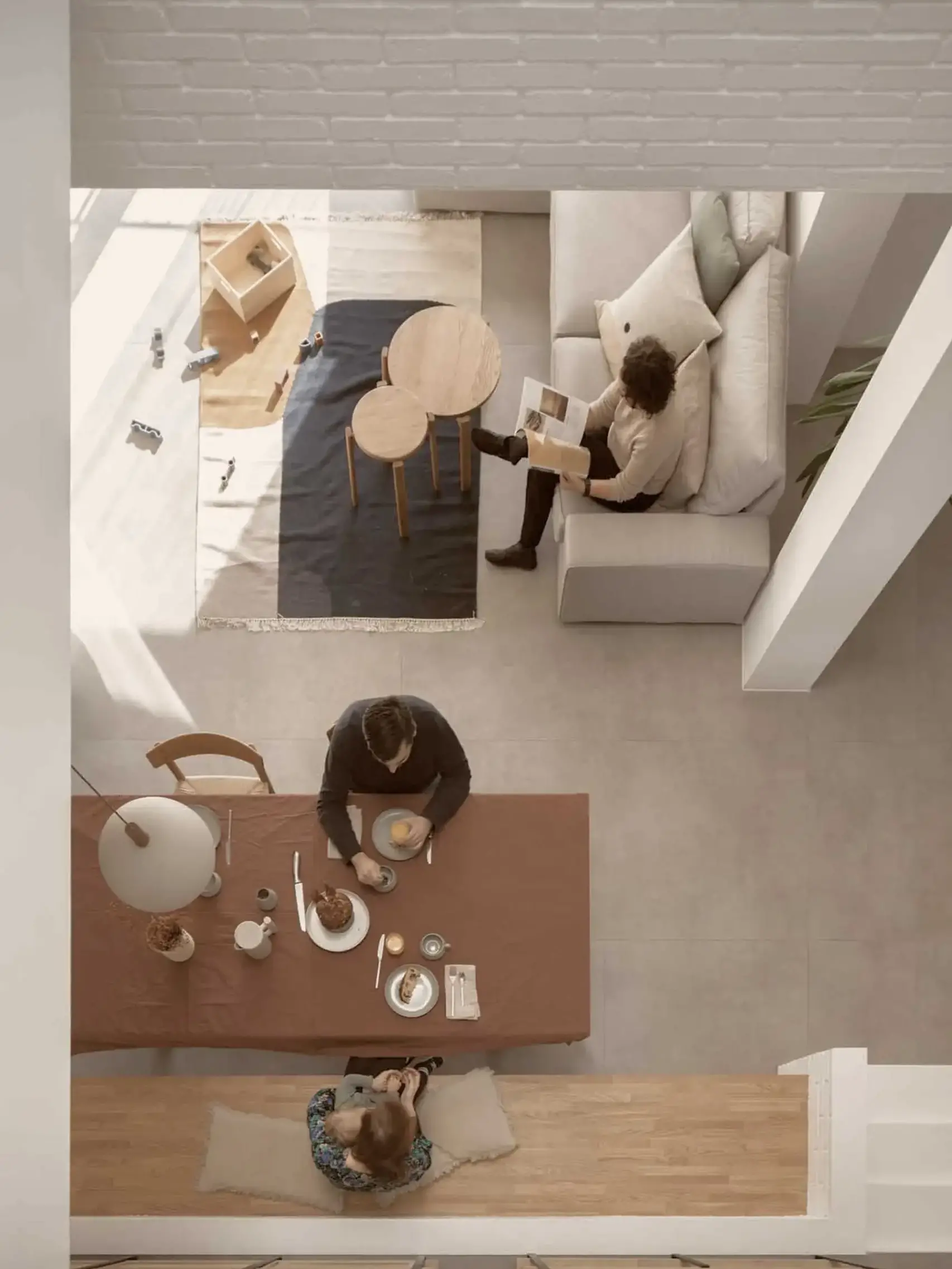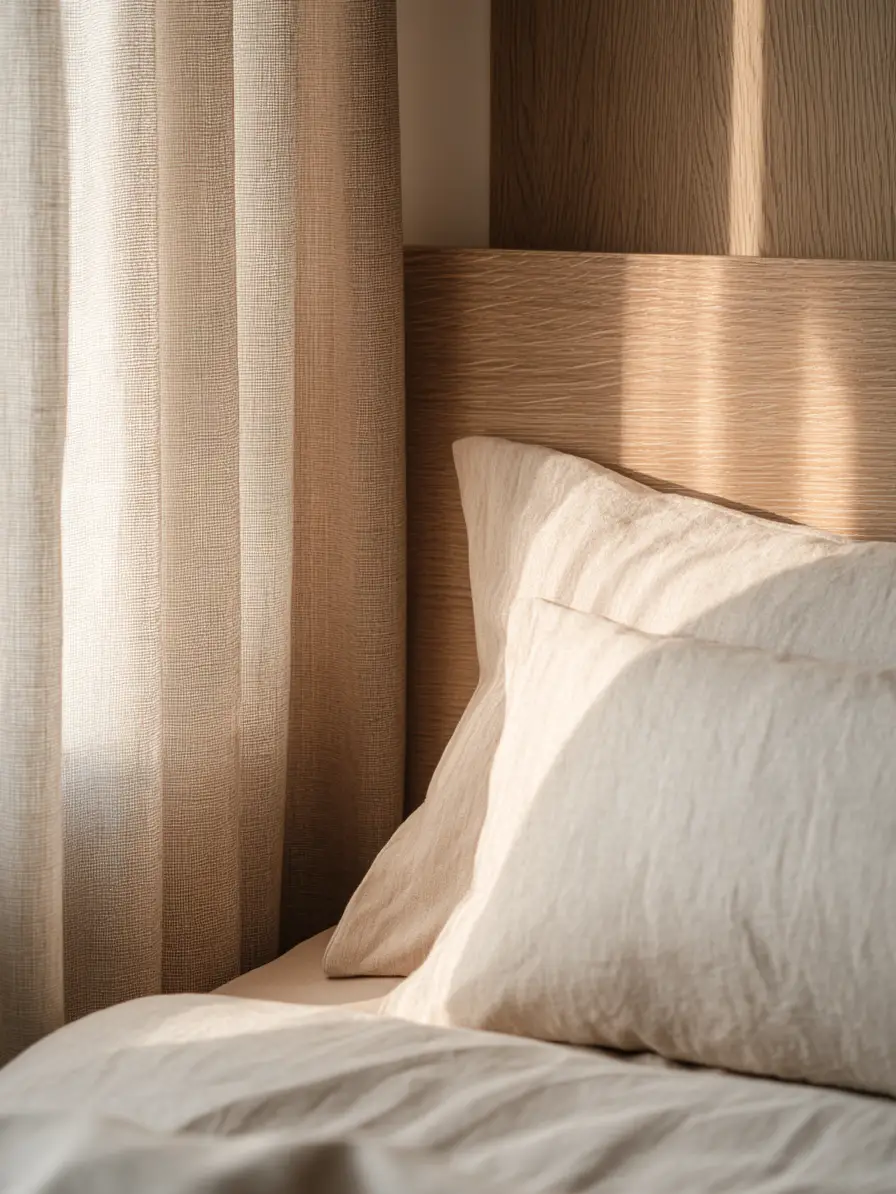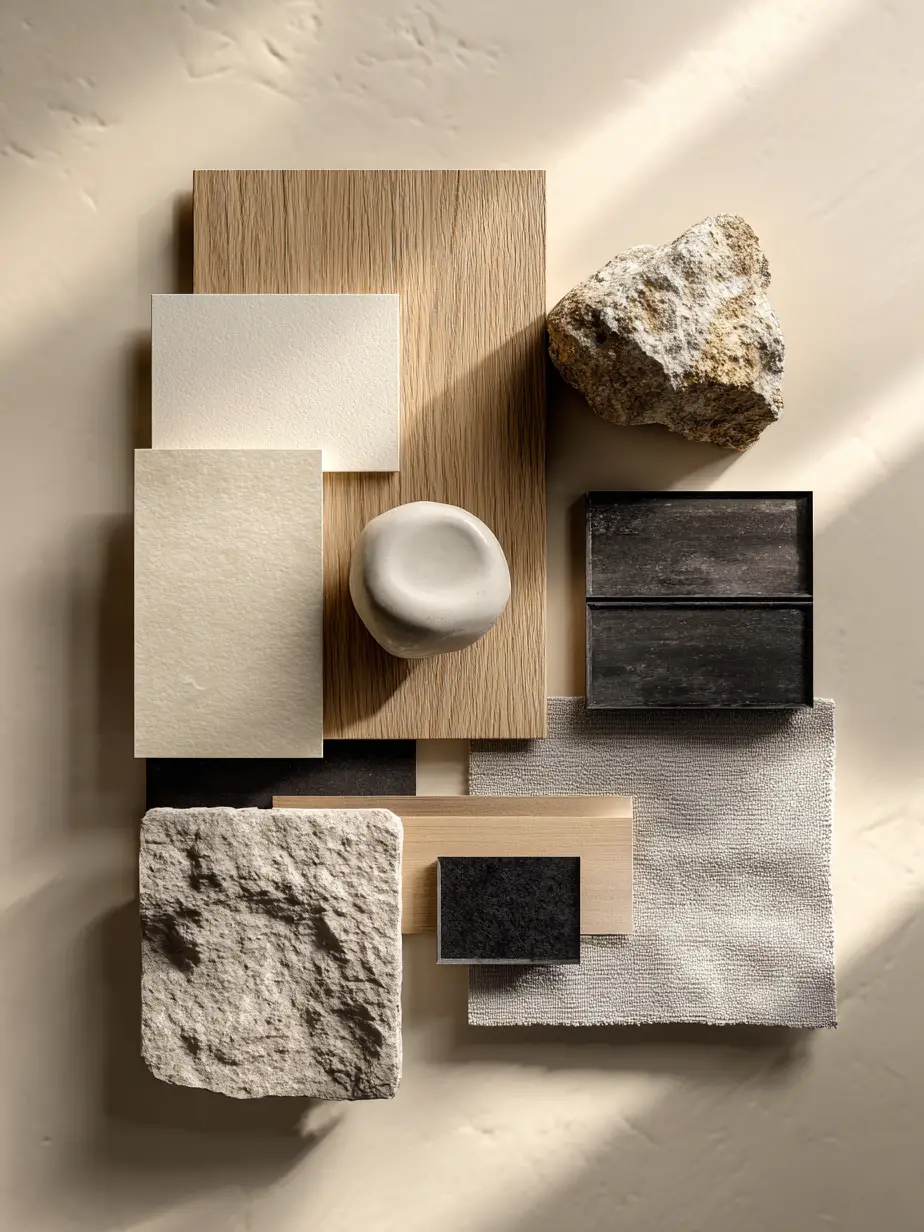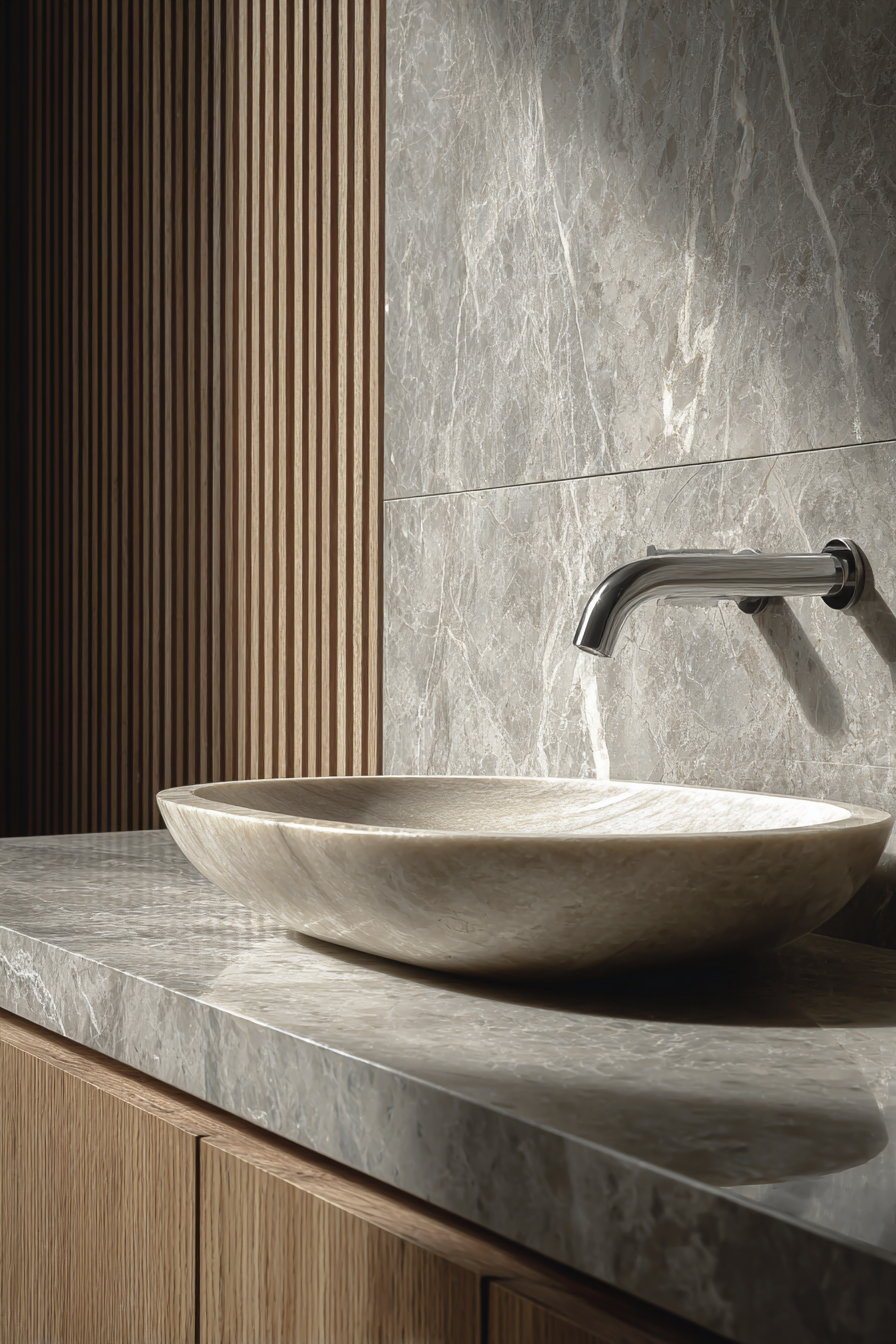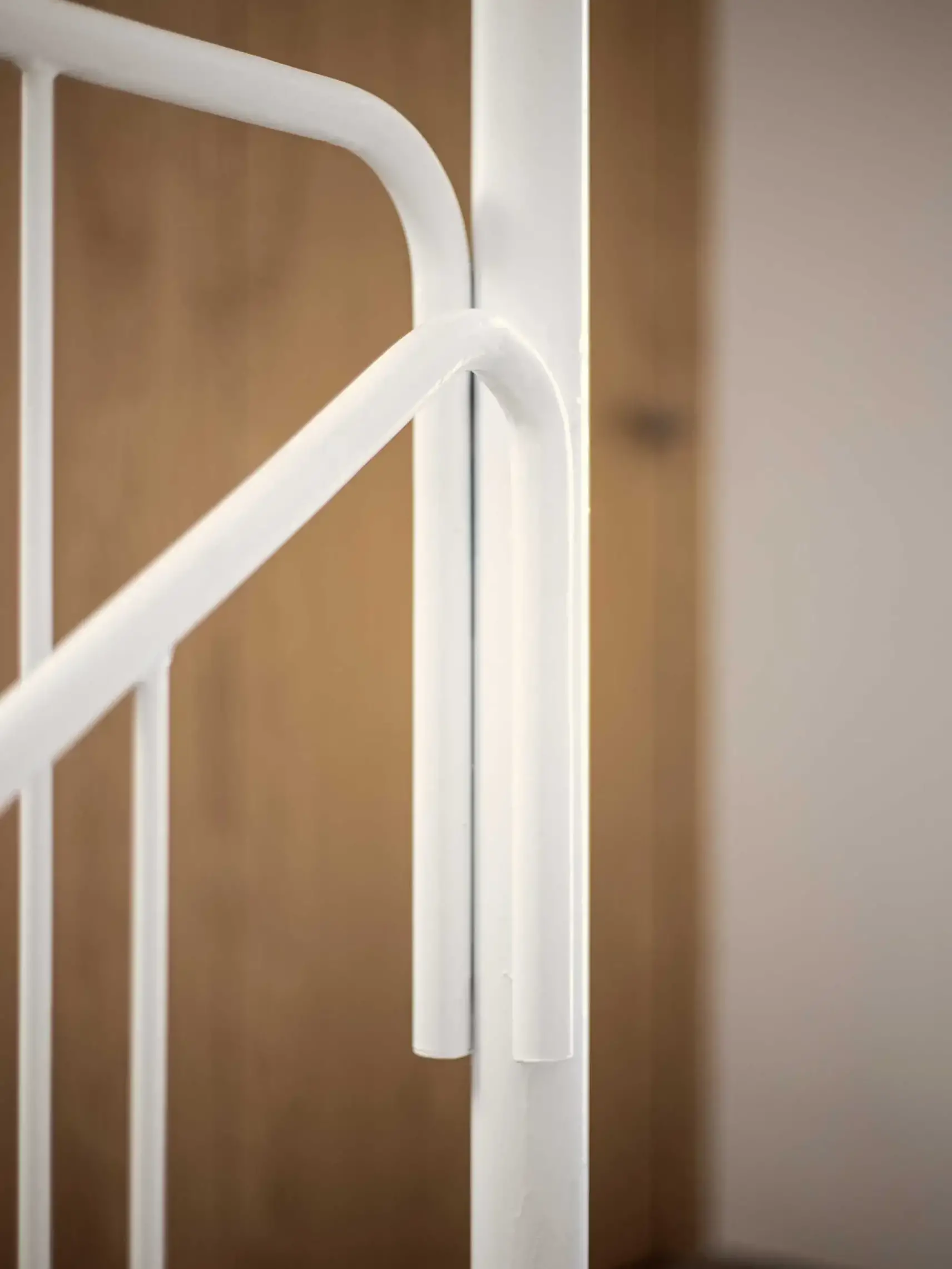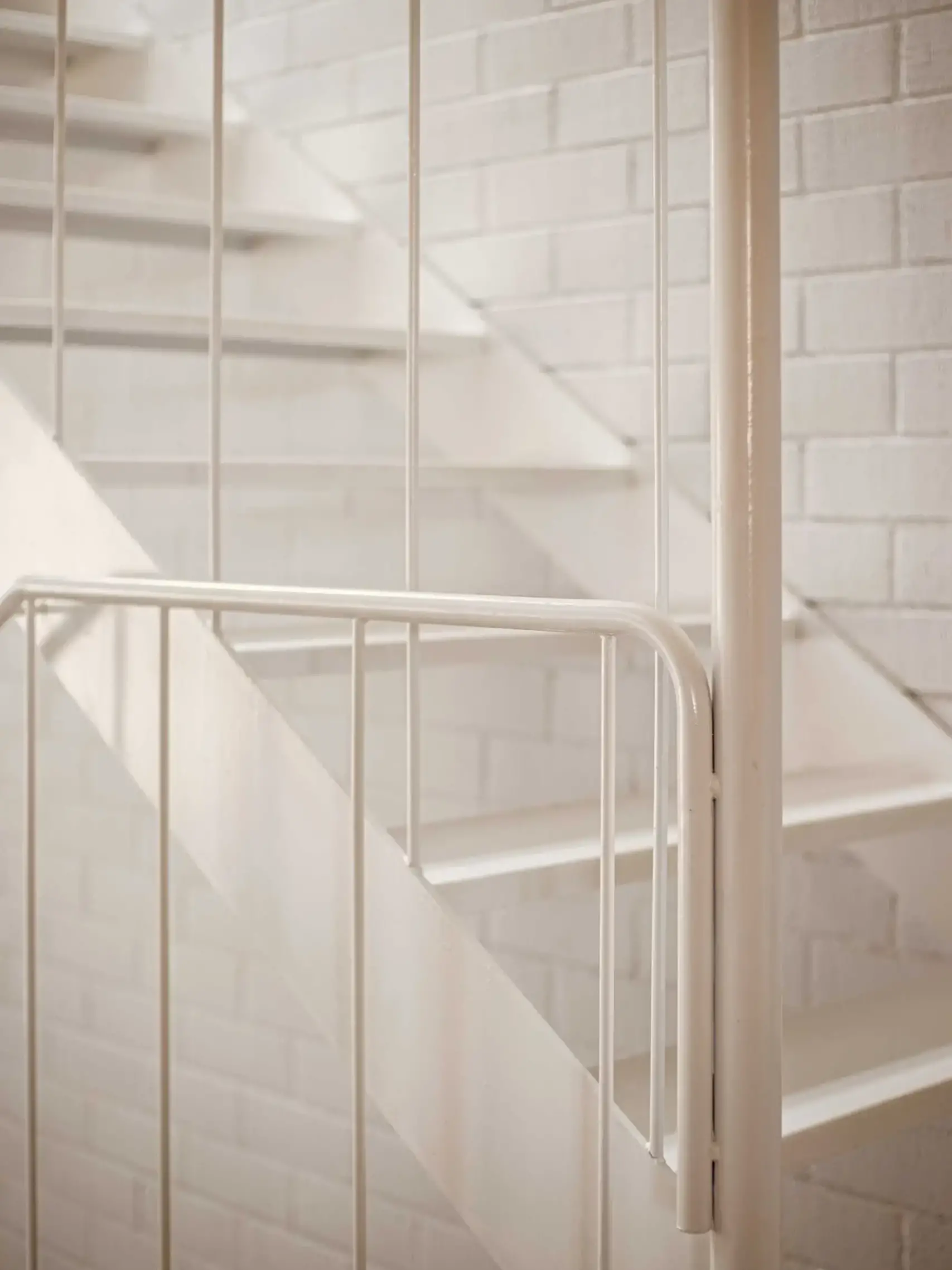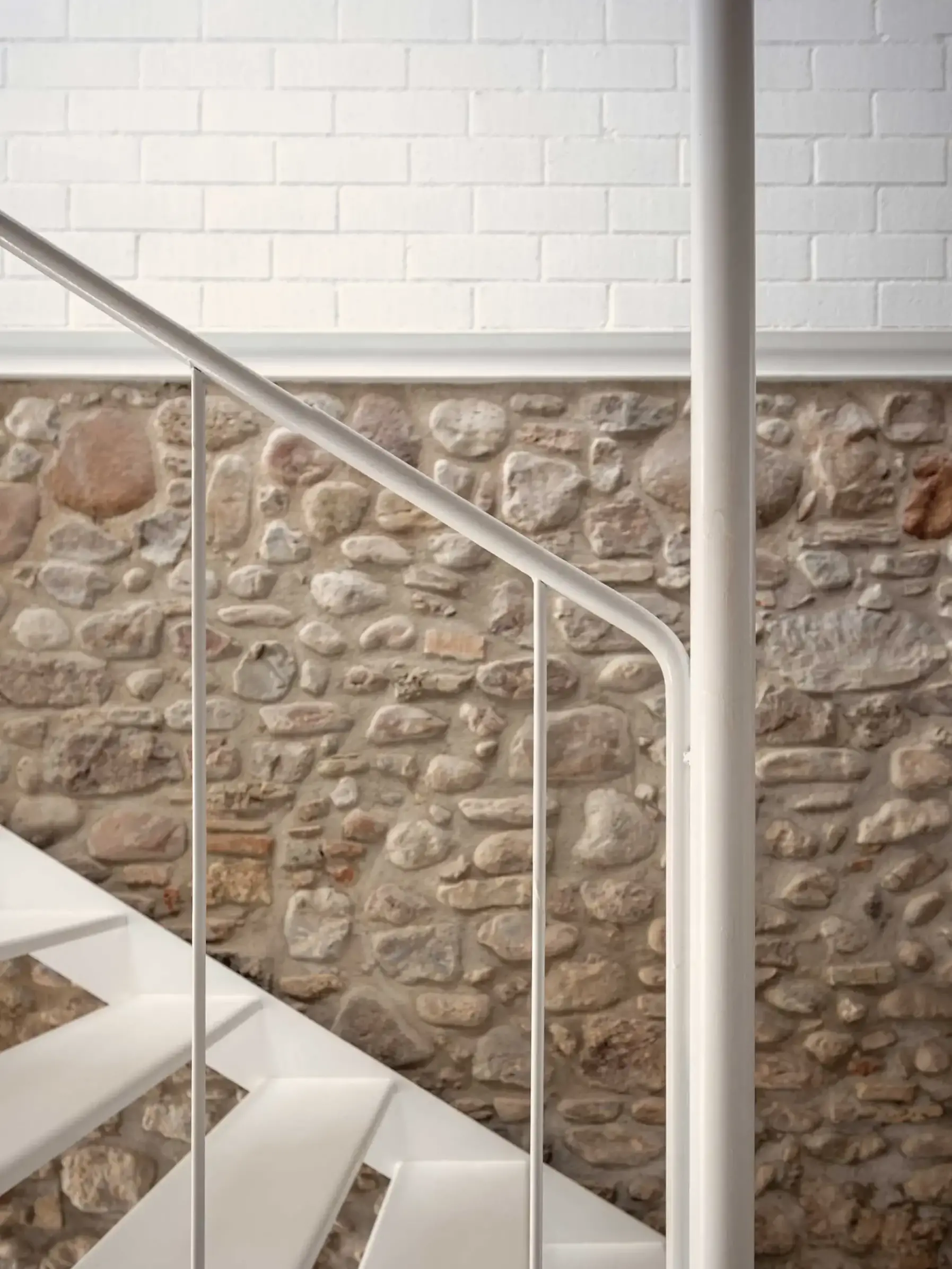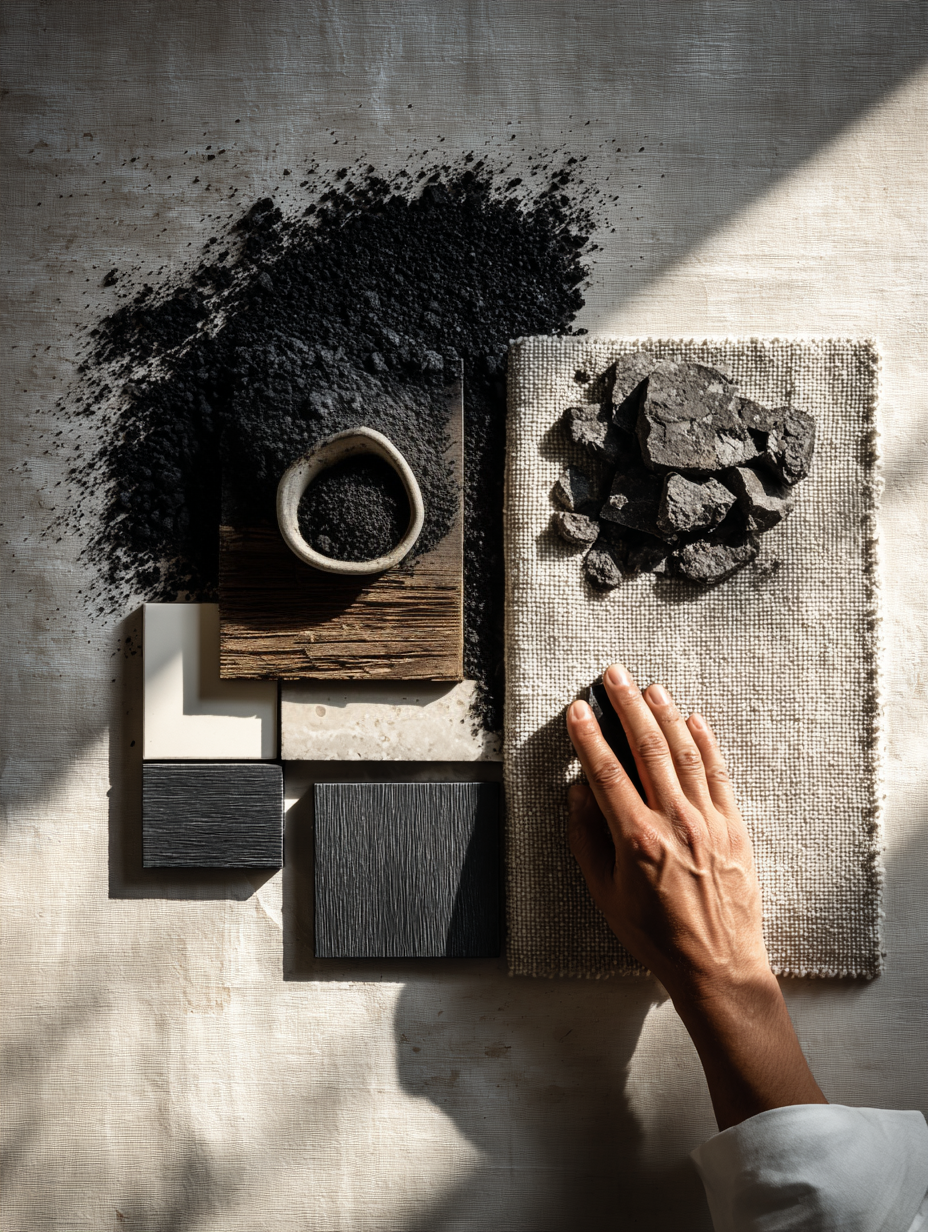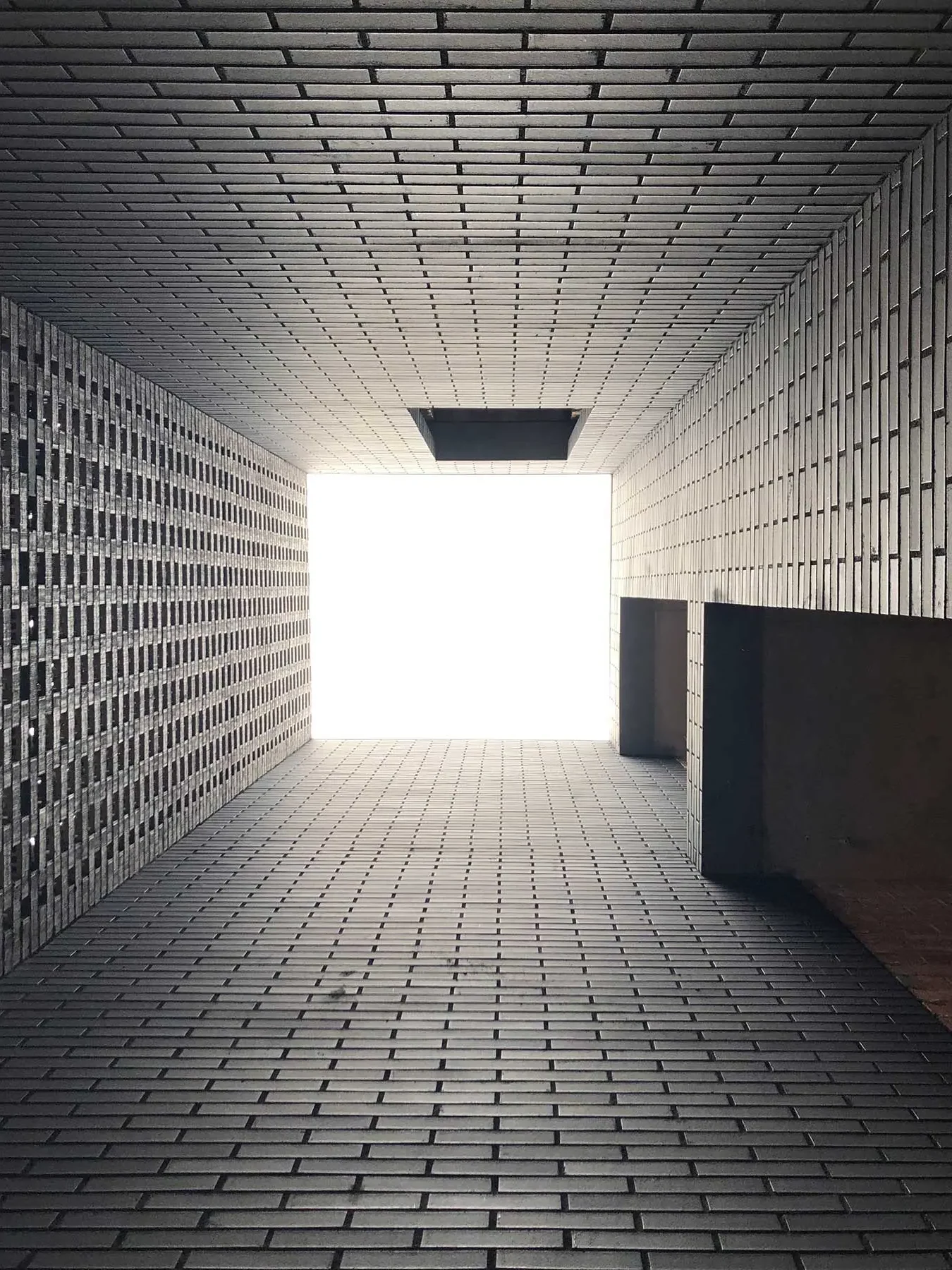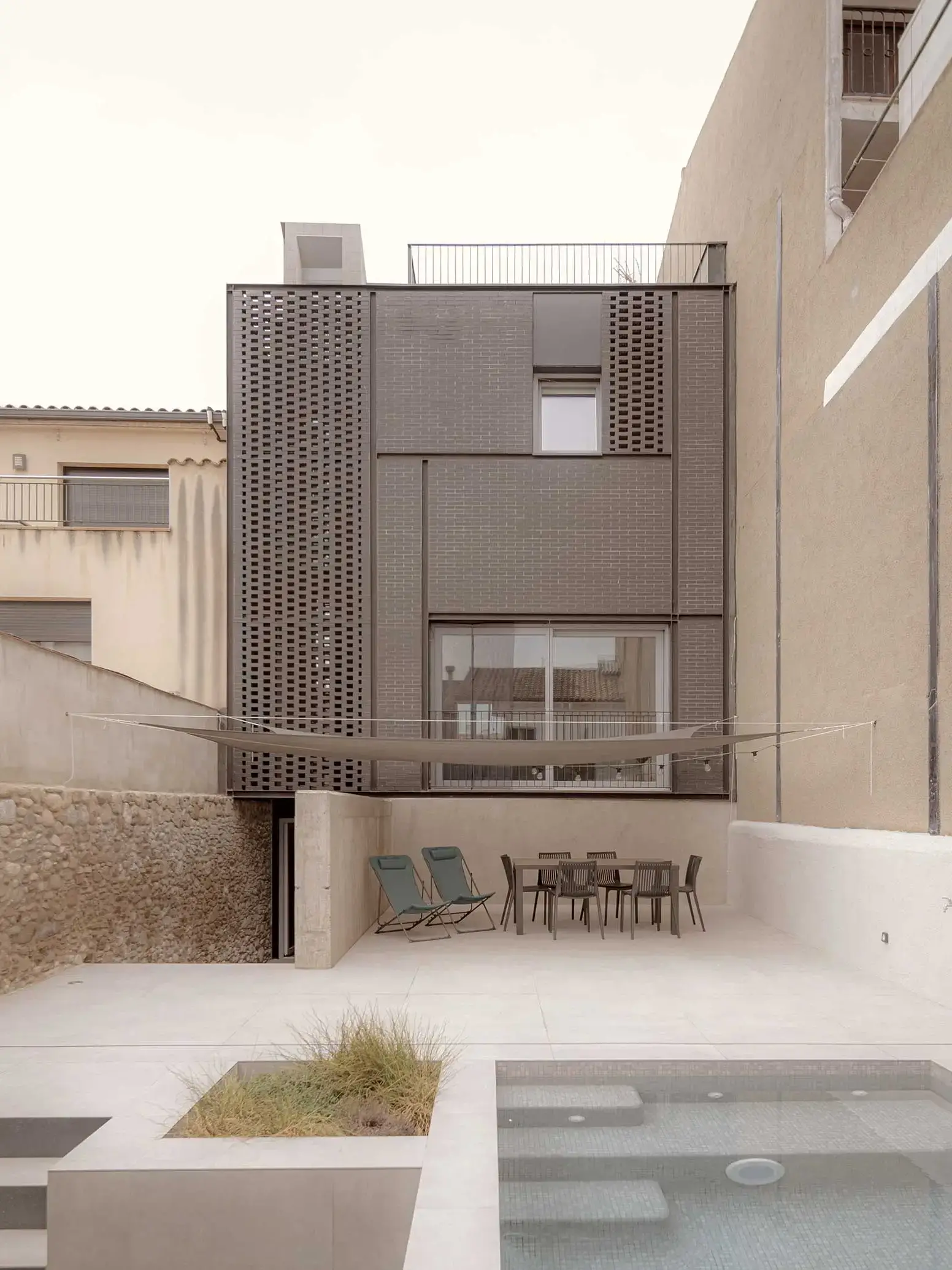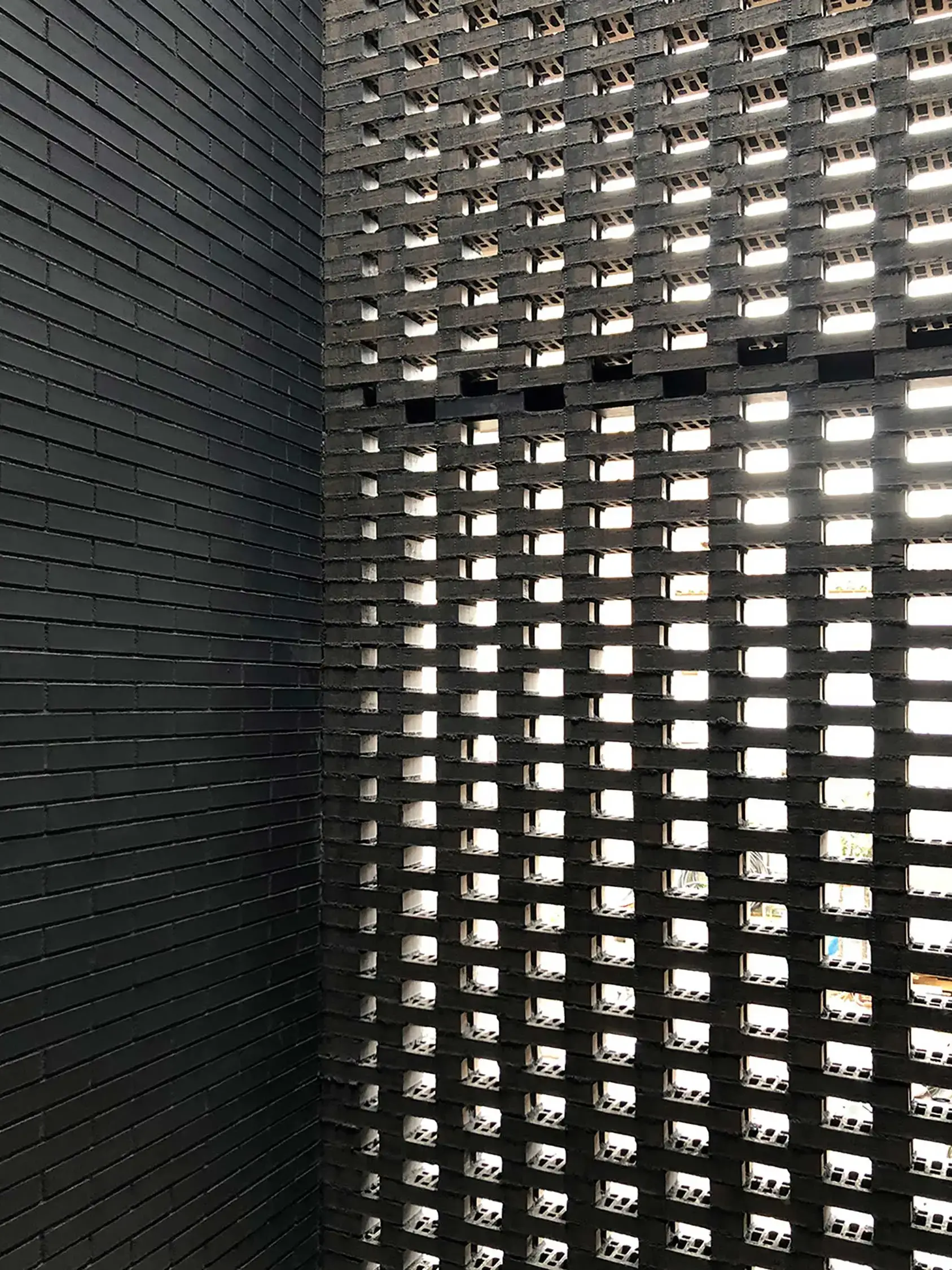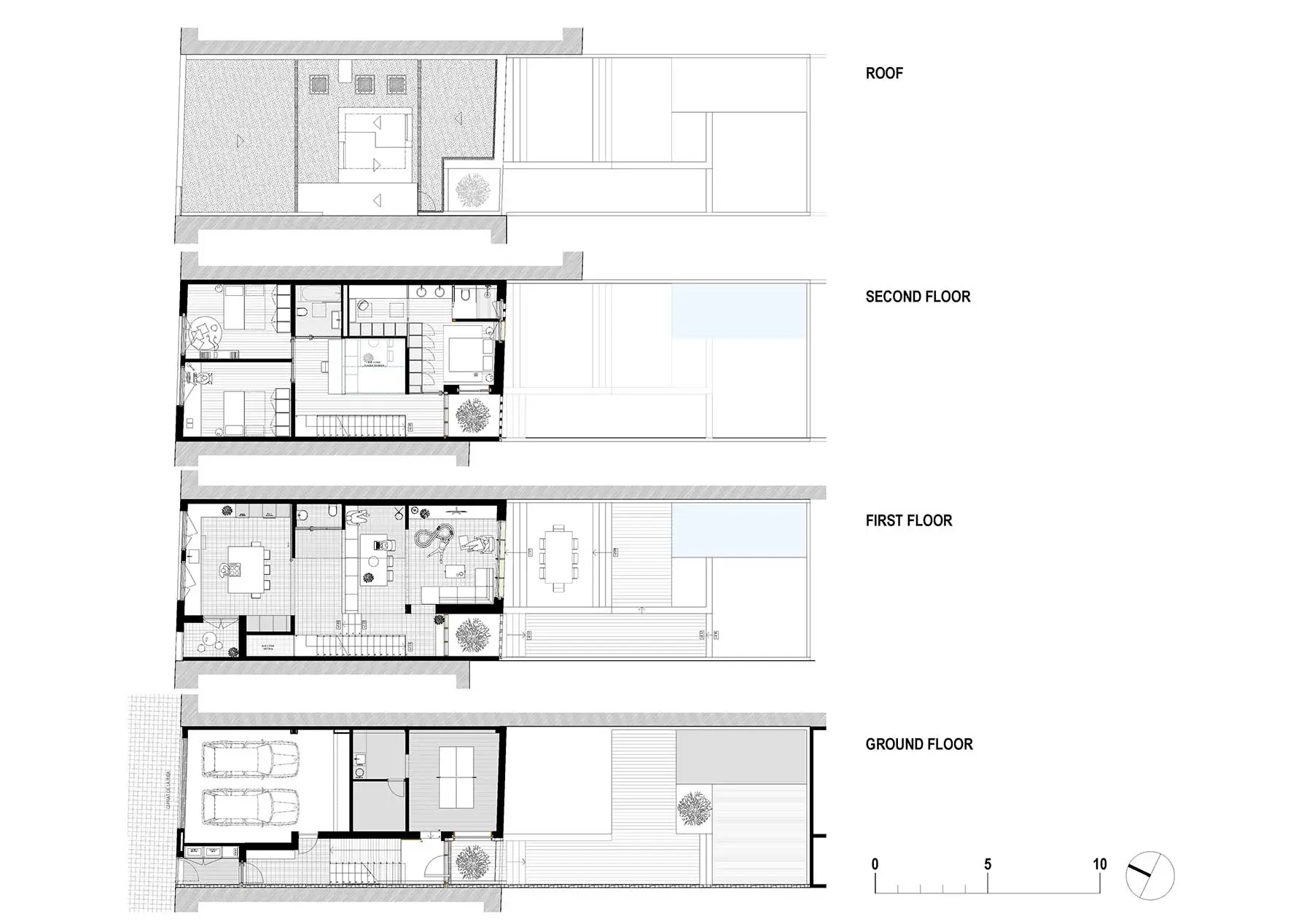Location
Santa Perpètua, Barcelona
Category
Residence
Photography
Grey Matter, Fem
Year
2022
On a narrow urban plot once occupied by a humble stable, Lightwell Residence emerges as an architecture that is as much about continuity as it is about transformation. For generations, this parcel of land remained tied to the same family, its stone walls enclosing a modest cobertizo where animals were kept. The weight of memory was never seen as a constraint but rather as an opportunity – to build upon what was already there and to weave the quiet traces of history into a contemporary home.
The decision to preserve the old stone wall was not merely aesthetic; it was an act of respect. These stones, marked by weather and time, embody the essence of the site. They now form the tactile foundation of the house, a constant reminder that architecture is not created in isolation but grows from layers of meaning and belonging. Set against the whiteness of exposed brickwork and the clarity of new surfaces, the rugged stone introduces depth and irregularity, ensuring that the house is never sterile, never detached from its past.
This deliberate contrast defines the spirit of the residence. The roughness of the wall anchors the building, while the refined simplicity of oak, stucco, and porcelain establishes an atmosphere of calm. The past and the present coexist seamlessly, creating a home that feels both timeless and alive – a dwelling where family memory is not locked in nostalgia but reinterpreted in light and space.
What was once a stable has become the foundation for a family home. The decision to retain the old stone wall was not only about material but about belonging – a gesture that grounds the residence in its history while opening it to the future.
Working with light meant also working with shadow. The ceramic screen was designed as a veil, filtering brightness into patterns of subtlety, ensuring that the house could remain luminous yet private. In this way, the architecture negotiates the boundary between exposure and retreat, turning a façade into a living filter for everyday life.
The architecture is shaped by two essential strategies: a reimagining of the ground and an orchestration of light.
The garden, located at the level of the old stable, lay one floor beneath the new day areas. Left unresolved, this disconnect could have isolated the home from its most vital outdoor space. Instead, the ground was carefully reworked. By elevating the patio to an intermediate level, the architects created a new topography that establishes a natural flow between indoors and outdoors. The result is neither abrupt nor forced – a series of gentle steps and terraces lead the family from street to garden, from enclosed to open, from shadow to light. Circulation itself becomes landscape.
The second strategy is even more fundamental: light. With fourteen meters stretching from the street façade to the garden façade, the central spaces risked falling into dimness. The solution was to carve a vertical void at the heart of the plan – a lightwell that penetrates all floors and culminates in a skylight with double orientation. Facing east and west, it captures both morning brightness and evening warmth. As the day progresses, the atmosphere of the house changes continuously, the void transforming into a stage for sunlight. Walls glow, textures shift, shadows lengthen – time is made visible.
In this way, the house transcends static form. It becomes an instrument for light, tuned to the rhythms of the day and the life of the family.
The experience of dwelling begins at the entrance, where the architecture reveals its essence immediately. From the street, one steps into a space of transparency: a delicate steel staircase rises almost weightlessly, its slender lines allowing daylight to pass through. The eye is drawn at once to the patio at the back and upward to the skylight above, revealing in a single moment the dual anchors of the home – stone and light.
Ascending to the first floor, the house unfolds in a choreography of levels. The dining area is sunken by a few steps, subtly closer to the garden. This small gesture changes everything: the act of gathering around the table feels grounded, intimate, while the adjoining living room, slightly elevated, enjoys generous height and a sense of openness. Above, the kitchen overlooks both, bridging the spaces and ensuring conversation flows easily between them. The layering of levels is simple, yet it lends the home a rhythm that is both dynamic and serene.
Before materials were chosen or walls defined, the project began with a simple ambition – to bring light deep into the home.
The staircase continues upward, always following the line of the median wall. More than a functional core, it is an architectural element that channels light downward, its minimal steel treads and transparent railing allowing brightness to cascade across stone and brick. Every ascent becomes a ritual, accompanied by changing patterns of light and shadow. The house reveals itself not in a single glance but through movement – a sequence of perspectives, of openness and intimacy, of sky and stone.
The section reveals the project’s most decisive gesture: reworking the ground to bring the living room closer to the rear garden. By partially lowering the base and staggering levels, the house gains generous height in the social spaces, turning circulation into a gentle landscape of steps and landings that naturally extend toward the outdoors.
Beyond strategies and surfaces, the house is, above all, a framework for living. The atmosphere is luminous and serene, but it is also designed for the realities of family life. The split-level dining area, intimate and welcoming, becomes a natural center for gatherings. Built-in benches flow seamlessly from the architecture, creating places for conversation, play, and rest. Here, children draw or play, parents host friends, and daily meals become moments of connection.
Around the central lightwell, circulation opens to small niches where a desk fits naturally, offering a quiet spot for homework or reading. The void not only brings light but also creates opportunities for pause – moments where family life finds its rhythm.
Upstairs, the bedrooms are defined by intimacy. The master suite opens to a private patio screened by black ceramic blocks. Behind this veil, light filters softly, allowing openness without exposure. The children’s rooms enjoy similar qualities of brightness and protection, their oak partitions lending warmth and softness. Everywhere, the design balances openness and enclosure, gathering and retreat – the dual needs of family life.
Lightwell Residence is not a house to be admired from a distance but one to be inhabited. Its atmosphere shifts throughout the day, echoing the changing light, yet it remains constant in its serenity. Architecture here is not static, but lived.
Flexibility becomes part of the spatial language. The large sliding door allows the kitchen to merge with the living areas or to function as a quiet, independent room. In both cases, light flows freely across the spaces, ensuring that the connection to the whole remains intact.
If light is the soul of Lightwell Residence, materiality is its body. The choice of surfaces and textures was guided not only by durability but by their ability to evoke a sensory response, to transform the perception of space throughout the day.
The preserved stone wall is the most immediate expression of this approach. Rough and irregular, it offers a tactile presence that contrasts with the calm neutrality of the new. Whitewashed exposed brick lines the median wall, its subtle shadows shifting as sunlight moves across the surface. Stuccoed walls provide a matte backdrop, serene and unassuming, allowing light to take on volume and presence.
Against this mineral backdrop, oak carpentry introduces warmth and humanity. Doors, partitions, and inbuilt elements are crafted to feel light and approachable, a counterpoint to the weight of stone and brick. Large porcelain slabs in shades of grey extend seamlessly from interior to exterior, ensuring continuity, while the rear façade is defined by black ceramic latticework. This perforated screen ensures privacy while filtering daylight into patterns of softness. Facing the pool, its dark tone lends depth and sobriety, balancing the lightness of white walls and the brightness of stone.
In every instance, materials are not treated as mere finishes but as living companions. They absorb light differently, they invite touch, and they age with dignity. Together, they create an atmosphere that is calm yet sensorial, minimal yet never cold.
“
Working with topography allowed us to transform levels into landscapes, turning circulation into experience
- POL FEMENIAS, ARCHITECT
Lightwell Residence stands as both continuity and change. It preserves the memory of its origins – a family’s stable – while transforming it into a home that responds to contemporary life. By working with topography, it redefined the relationship between house and garden; by carving a lightwell, it brought the sky deep into the interior.
What emerges is a residence defined not by spectacle but by atmosphere. Stone anchors it, light transforms it, and tactility sustains it. It is a house of contrasts – rugged and refined, open and enclosed, timeless yet constantly changing.
The palette of materials is rooted in tactility and permanence – rough stone preserved from the original stable, whitewashed brick reflecting the play of light, oak joinery bringing warmth, and black ceramic screens adding depth. Together, these elements create an atmosphere that is calm, timeless, and quietly sensorial.
At the heart of the residence lies a search for stillness within change. Light enters from multiple directions, surfaces catch it differently, and daily rituals unfold with a natural rhythm – reminding us that dwelling well means living in harmony with the shifting qualities of our surroundings.
In the end, its true achievement lies not in its strategies or materials but in the way it frames daily life. It creates a luminous backdrop for family gatherings, quiet retreats, and everyday rituals. It reminds us that good architecture does not impose itself but enhances life – through serenity, tactility, and the poetry of changing light.
